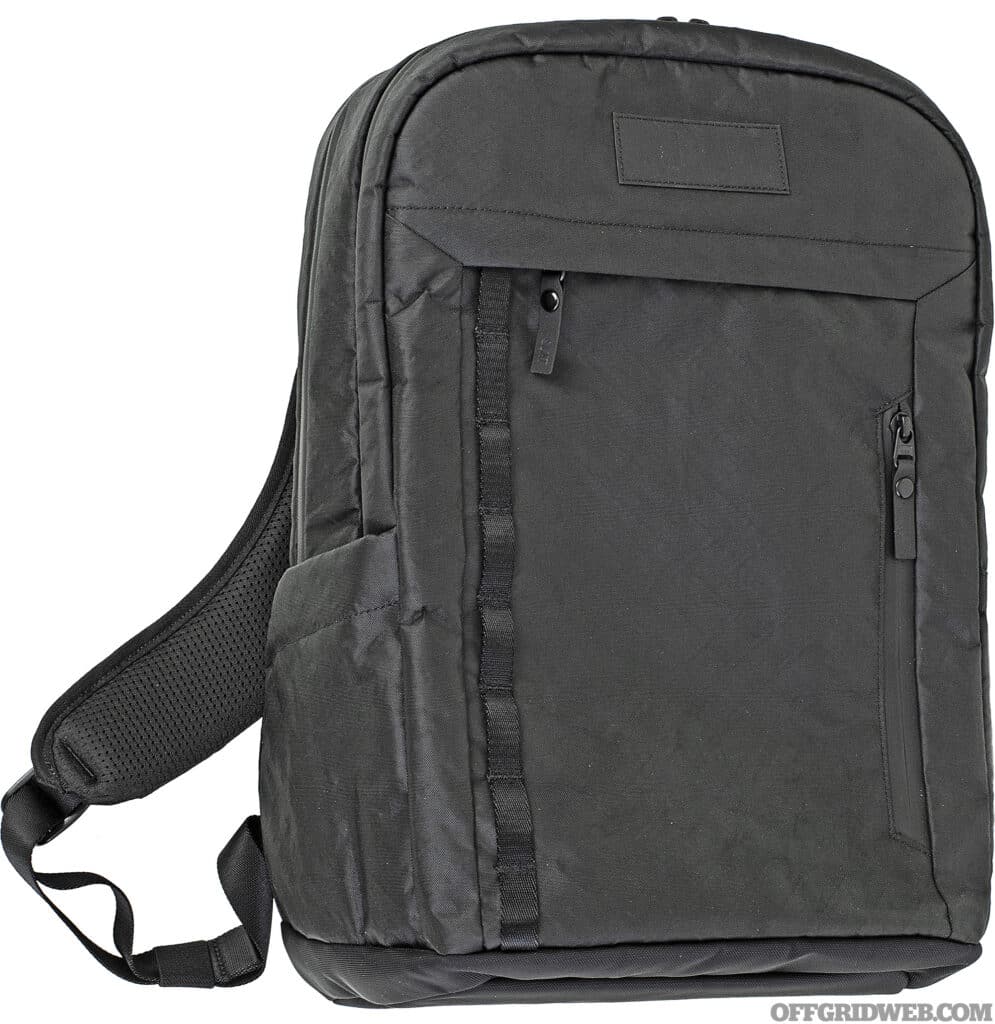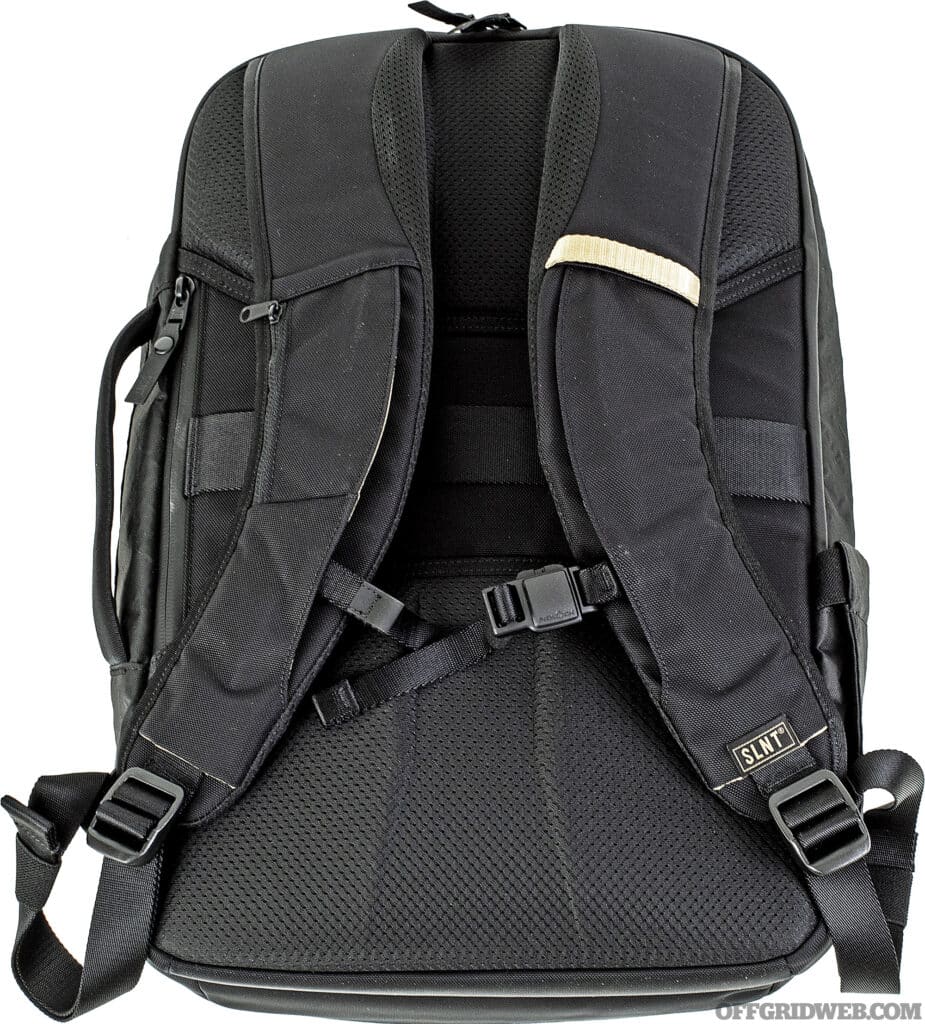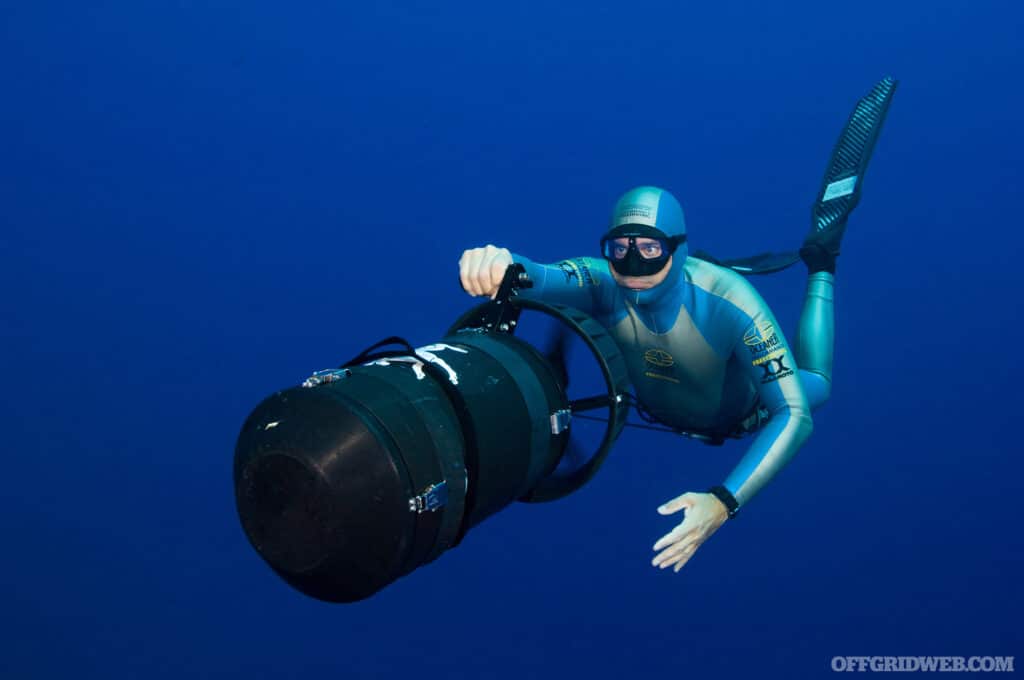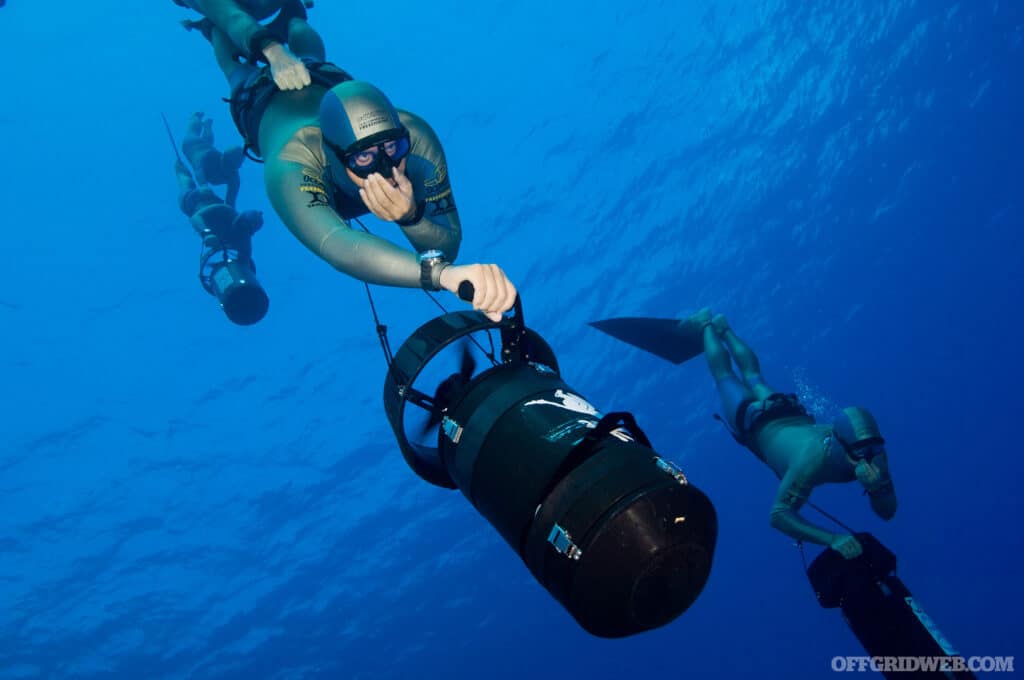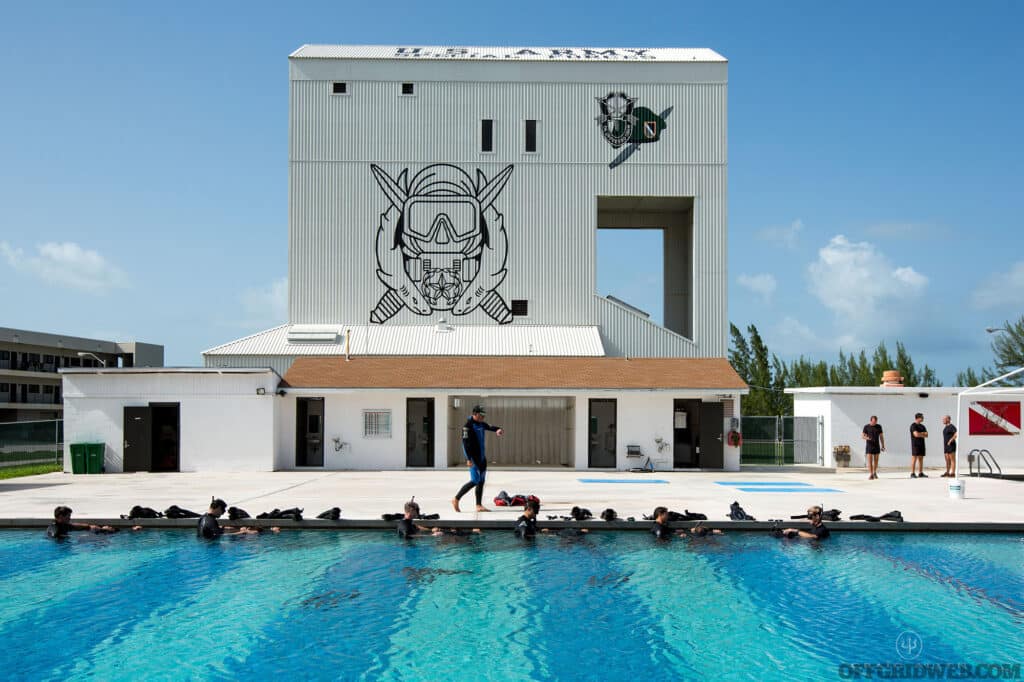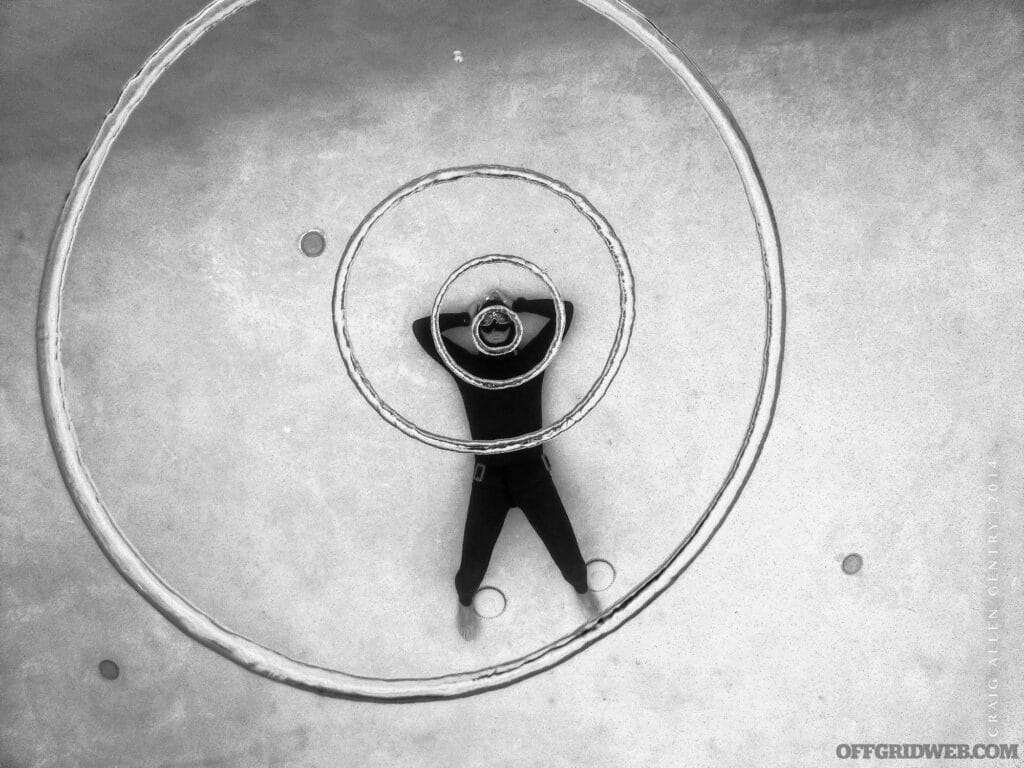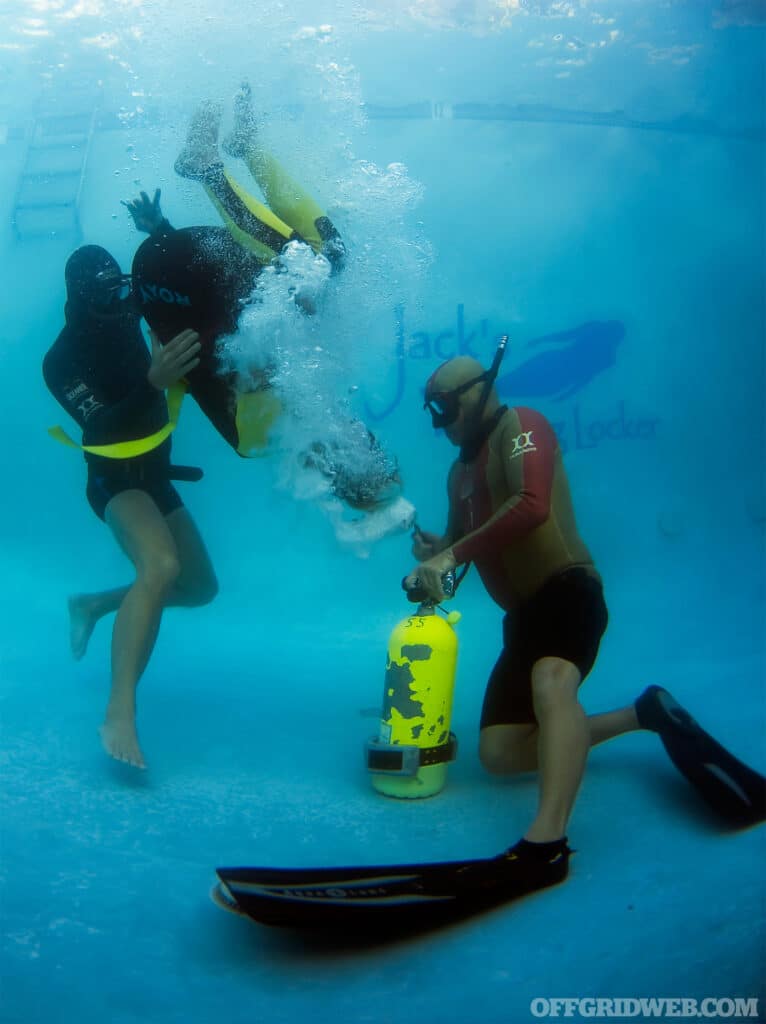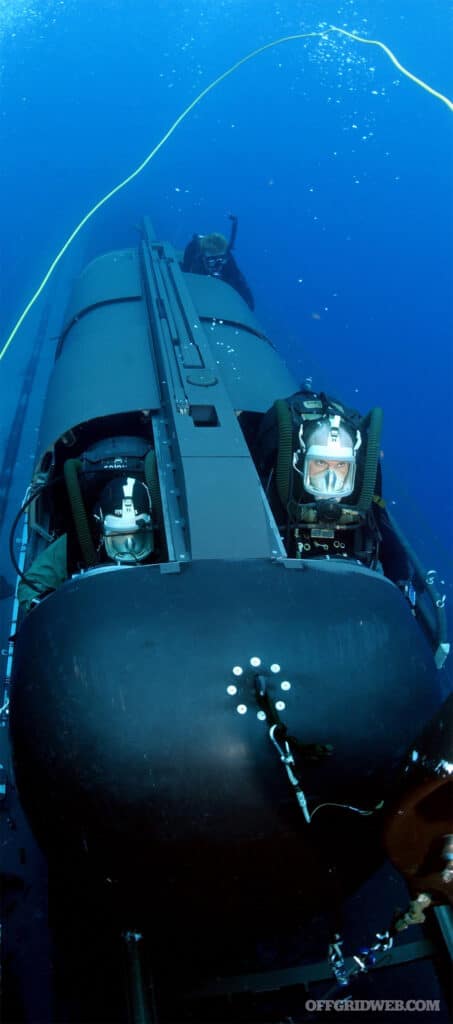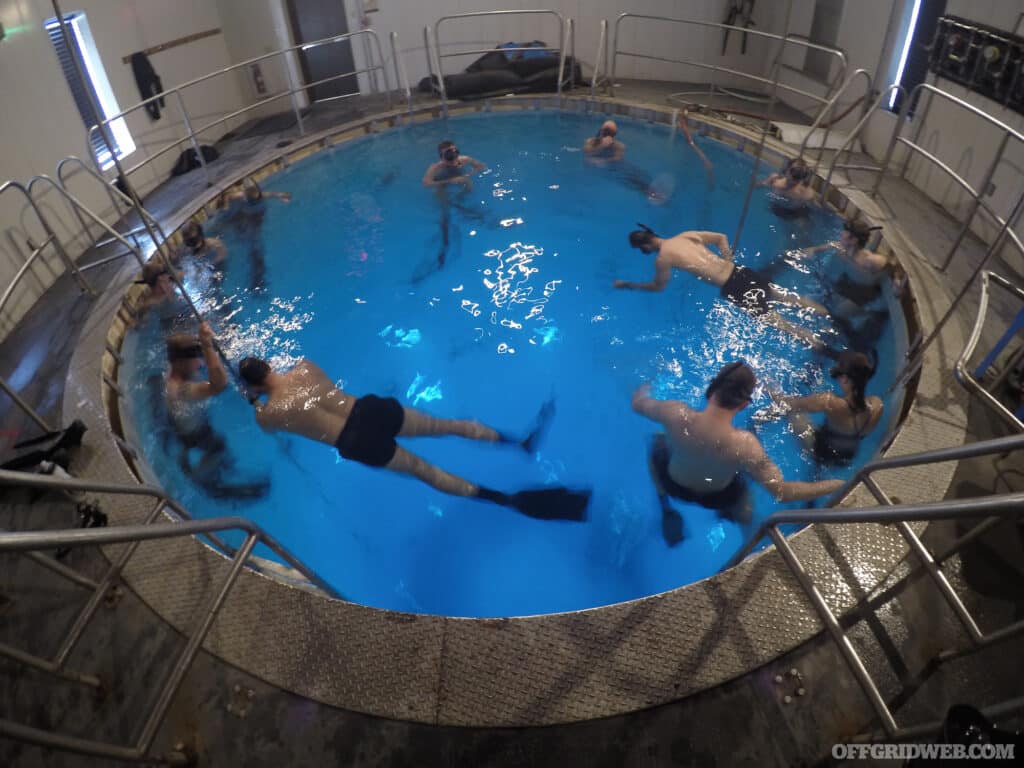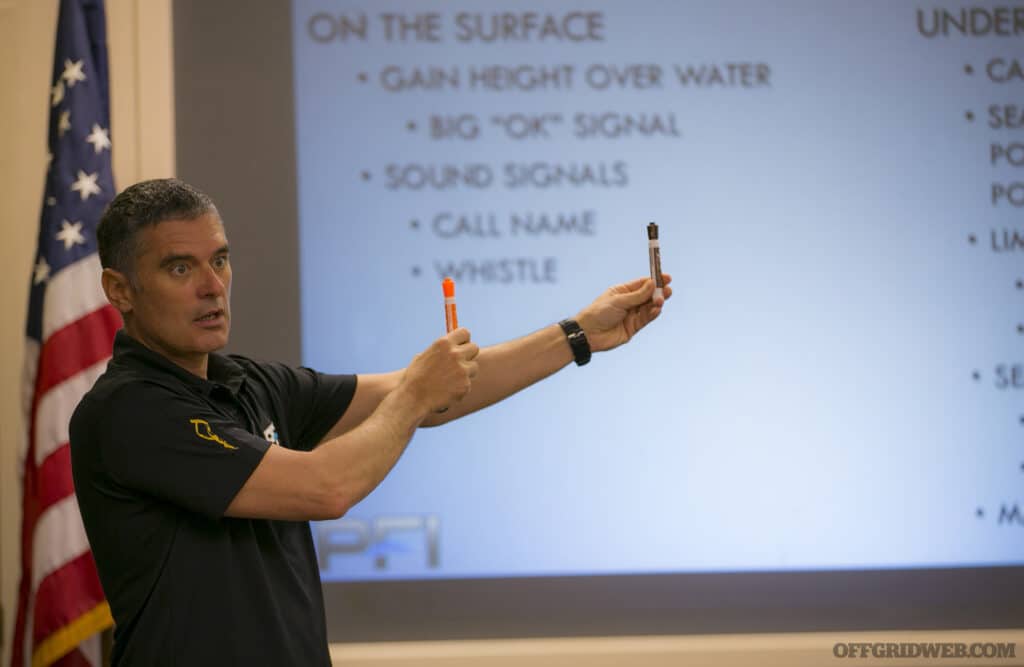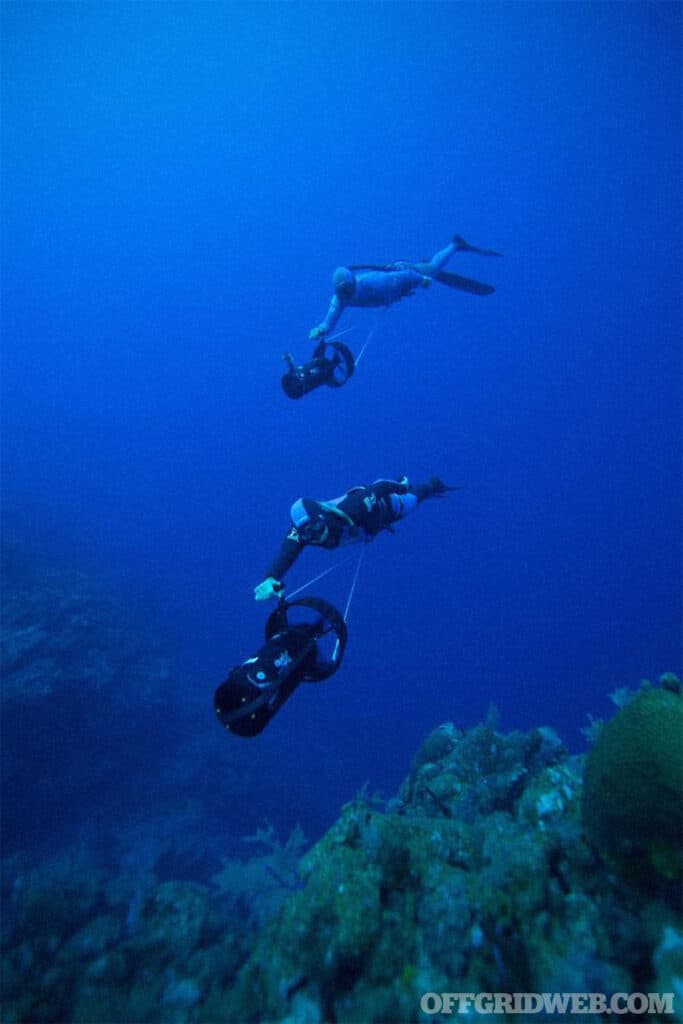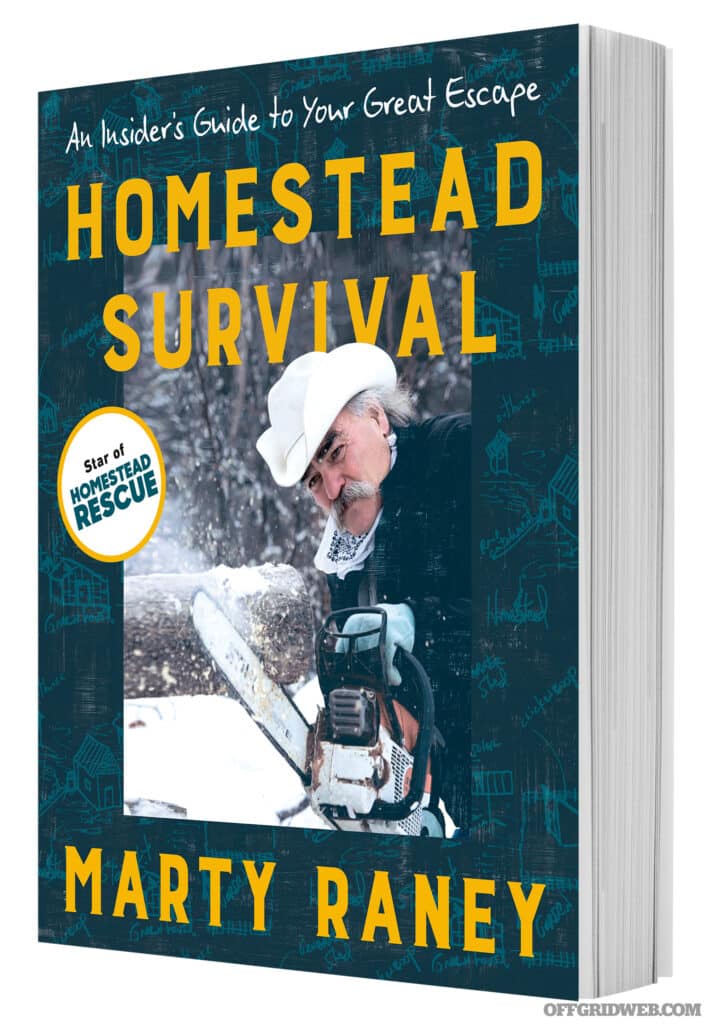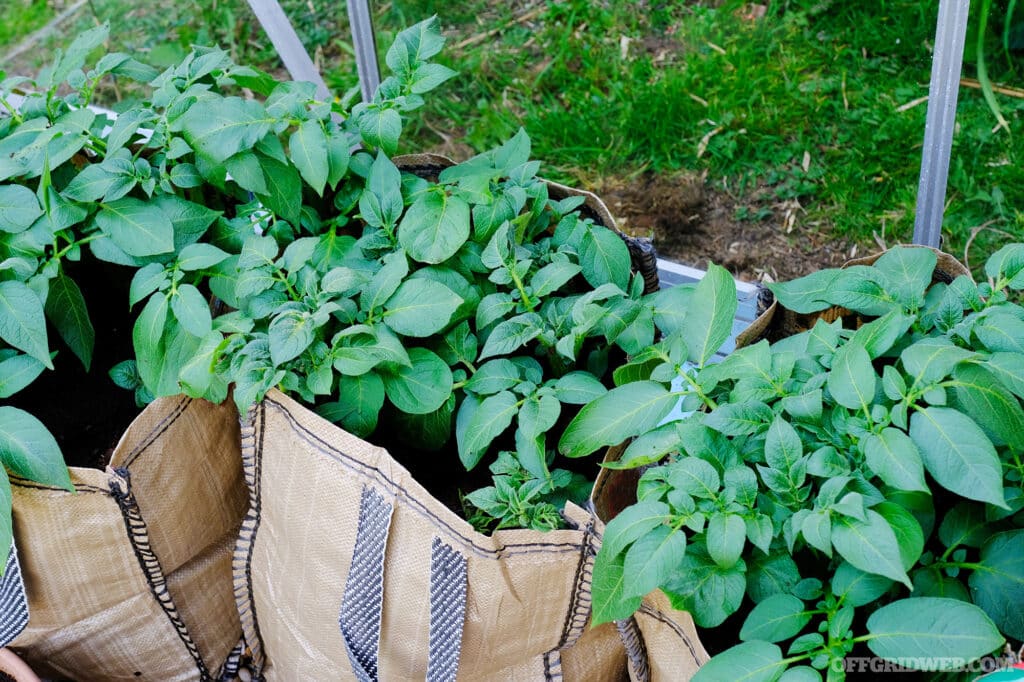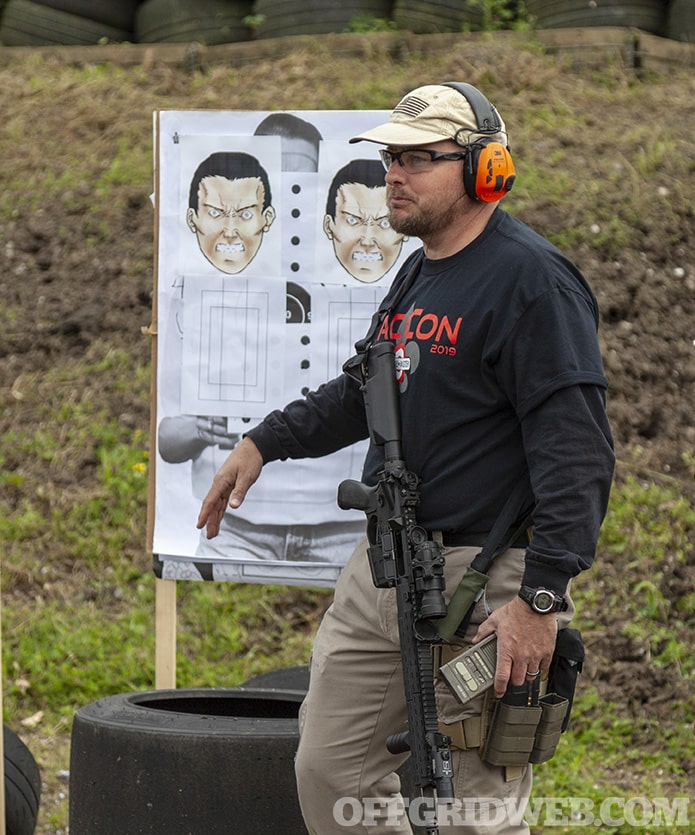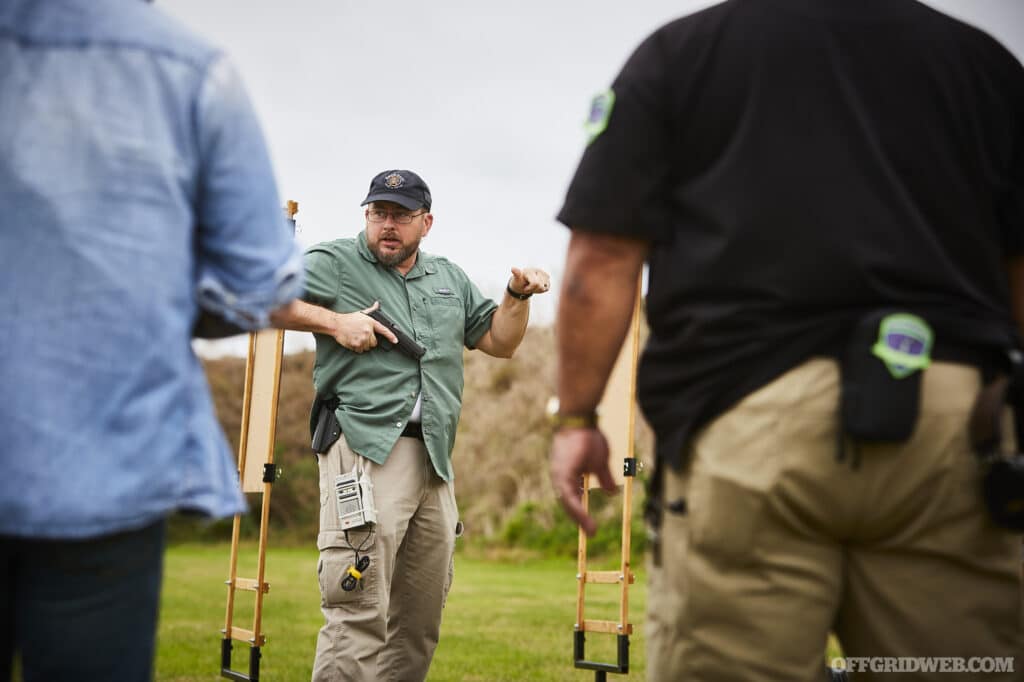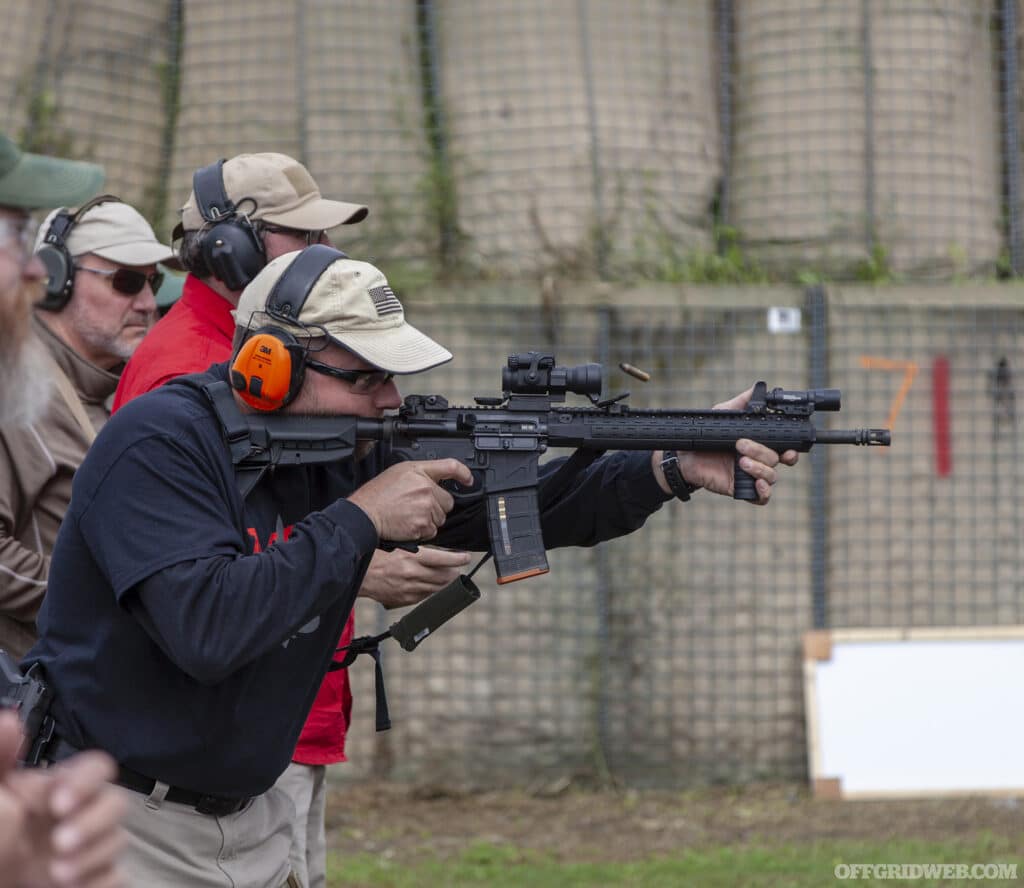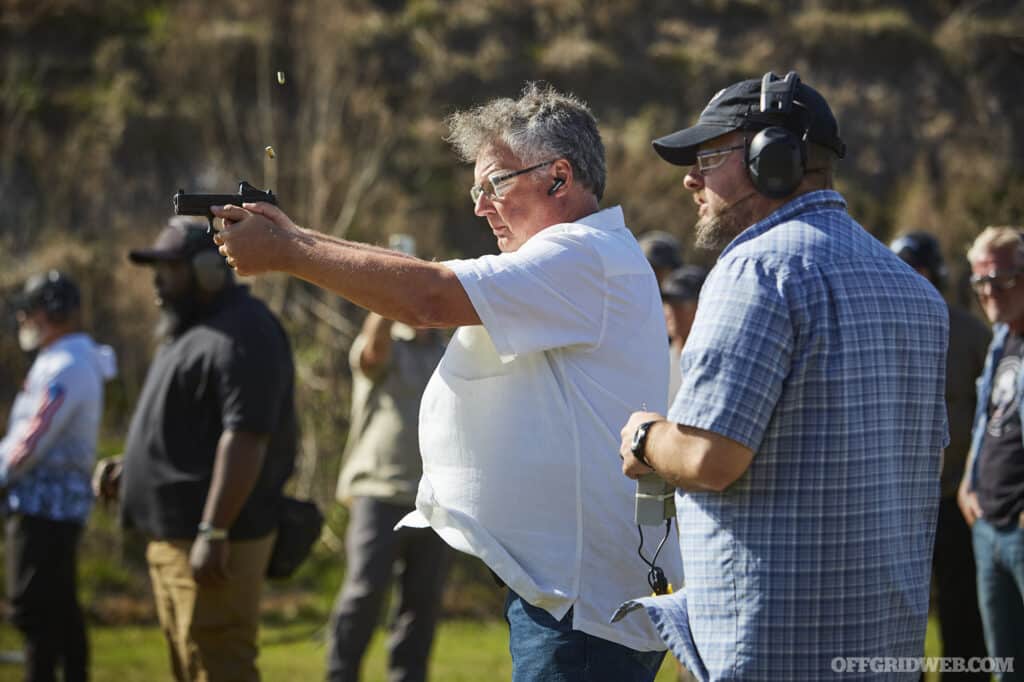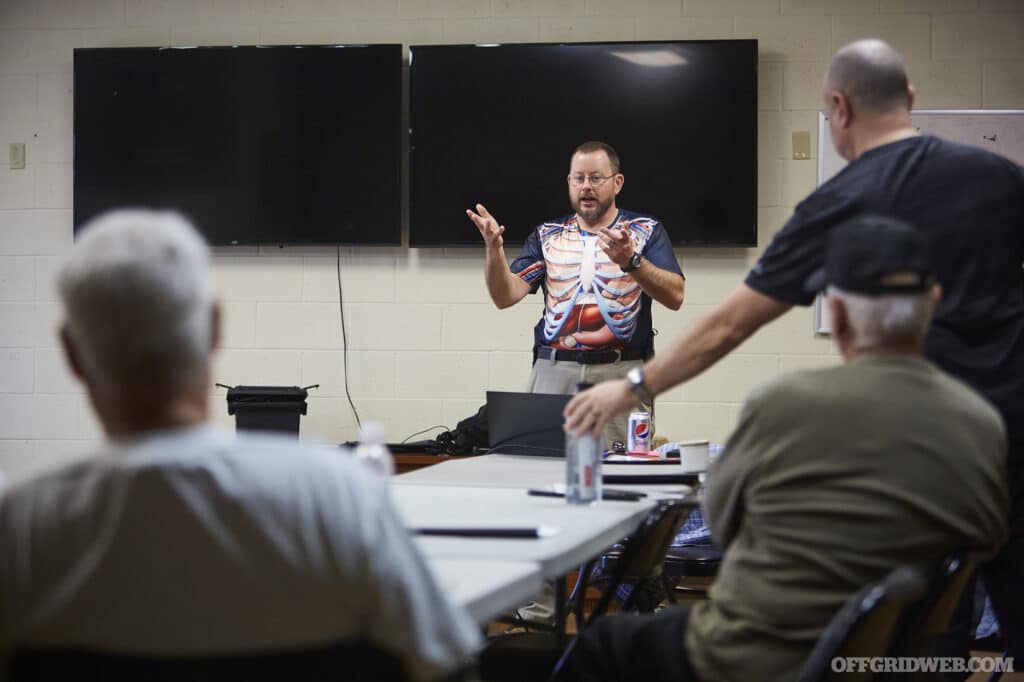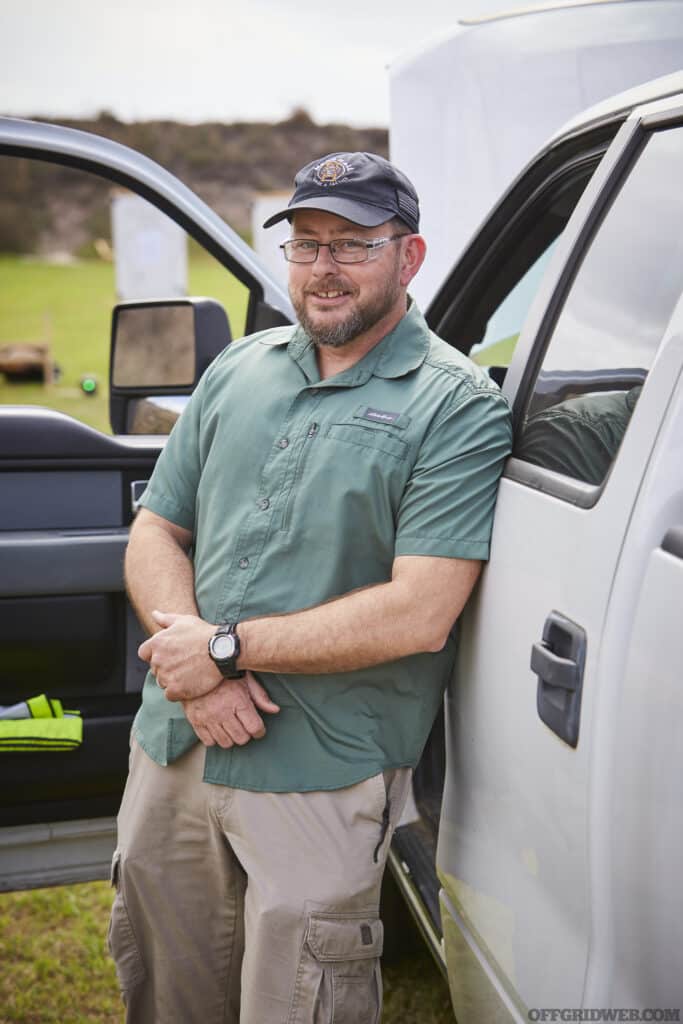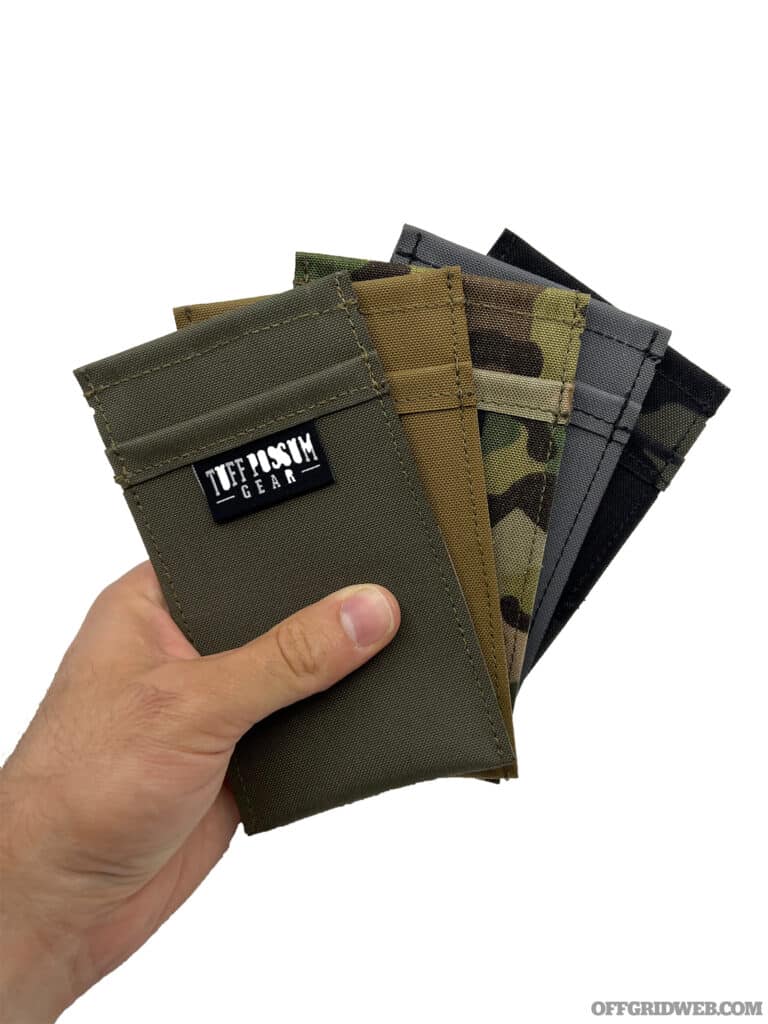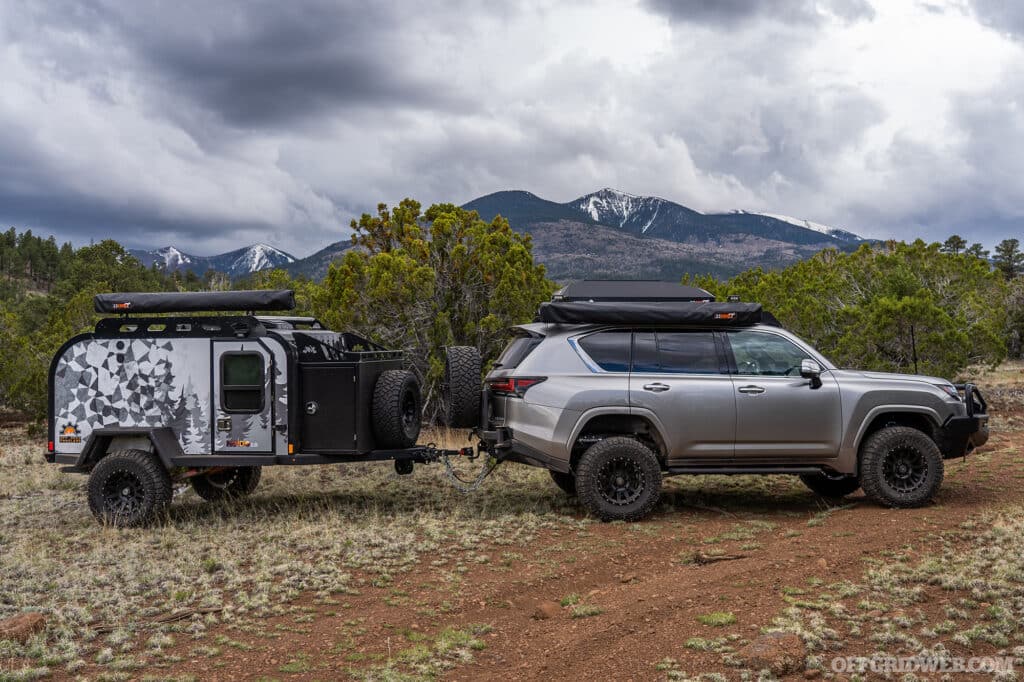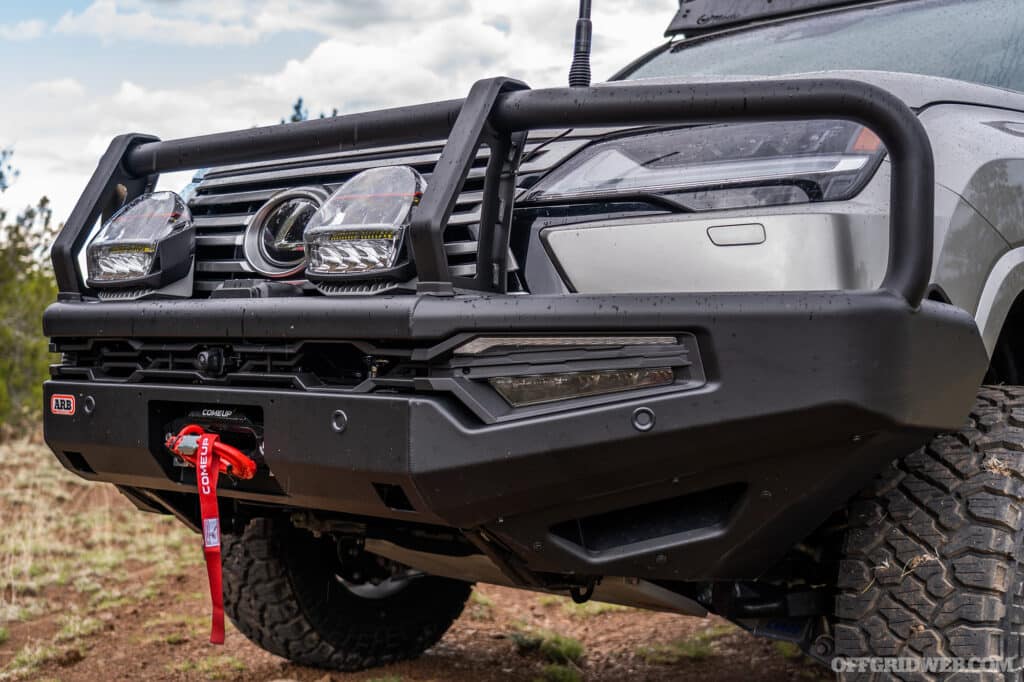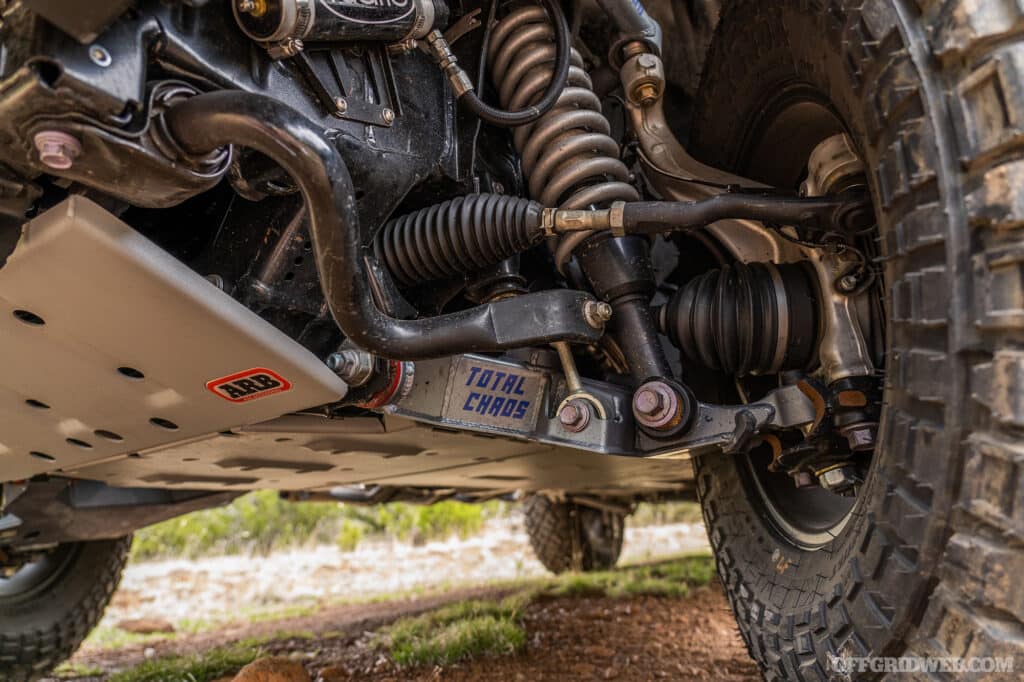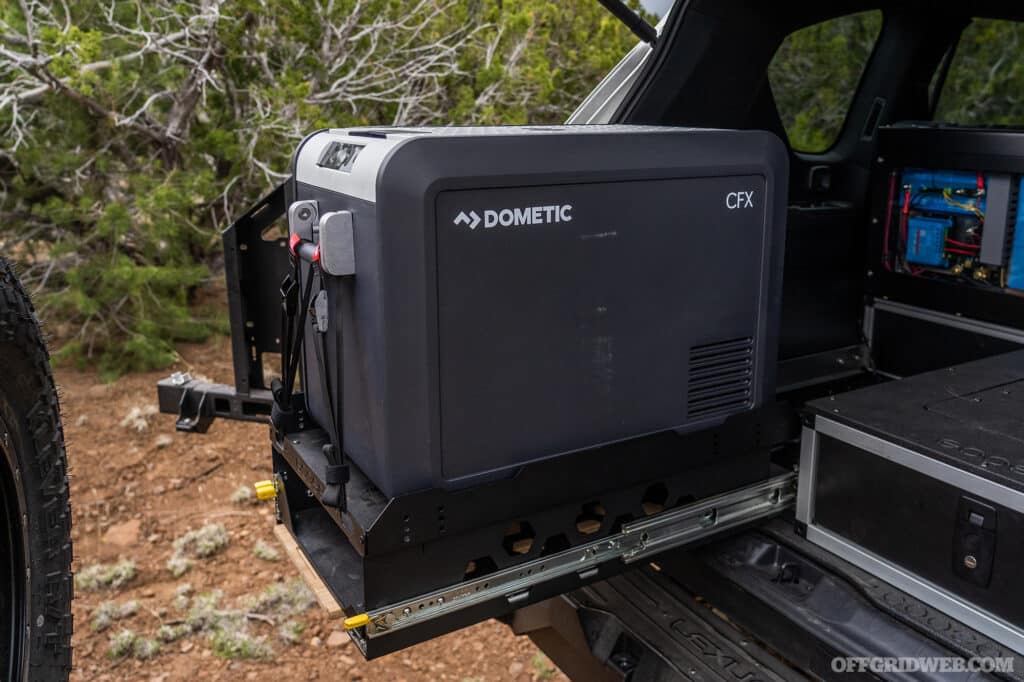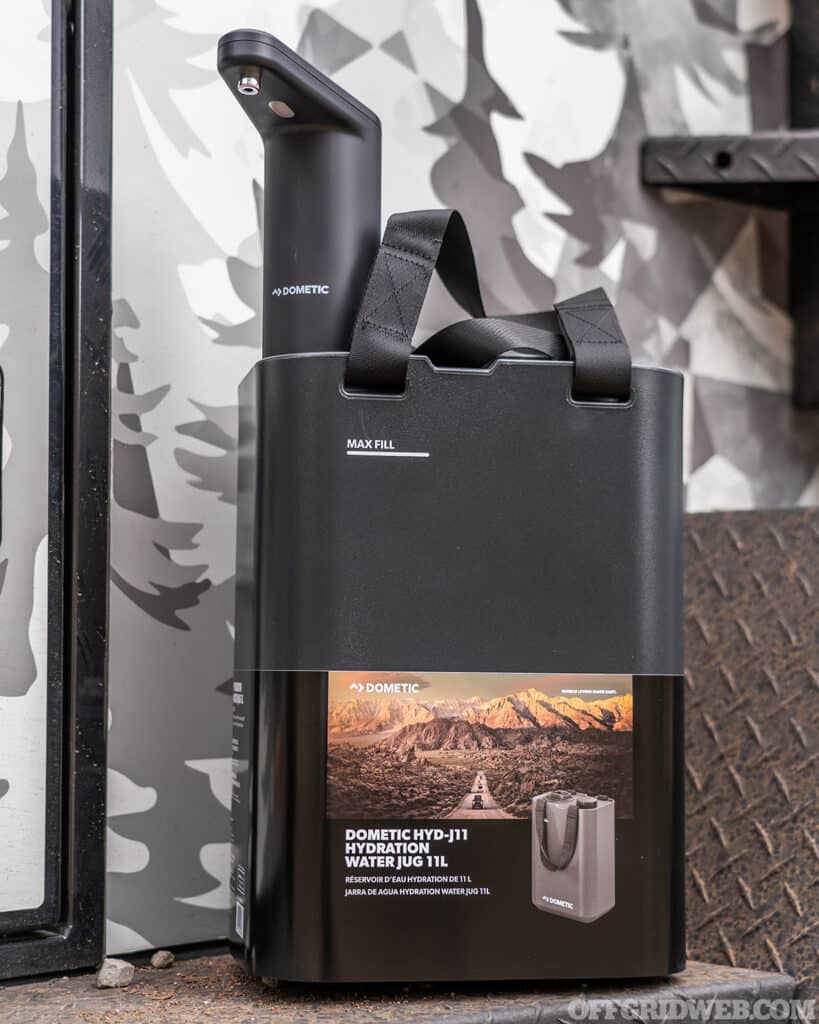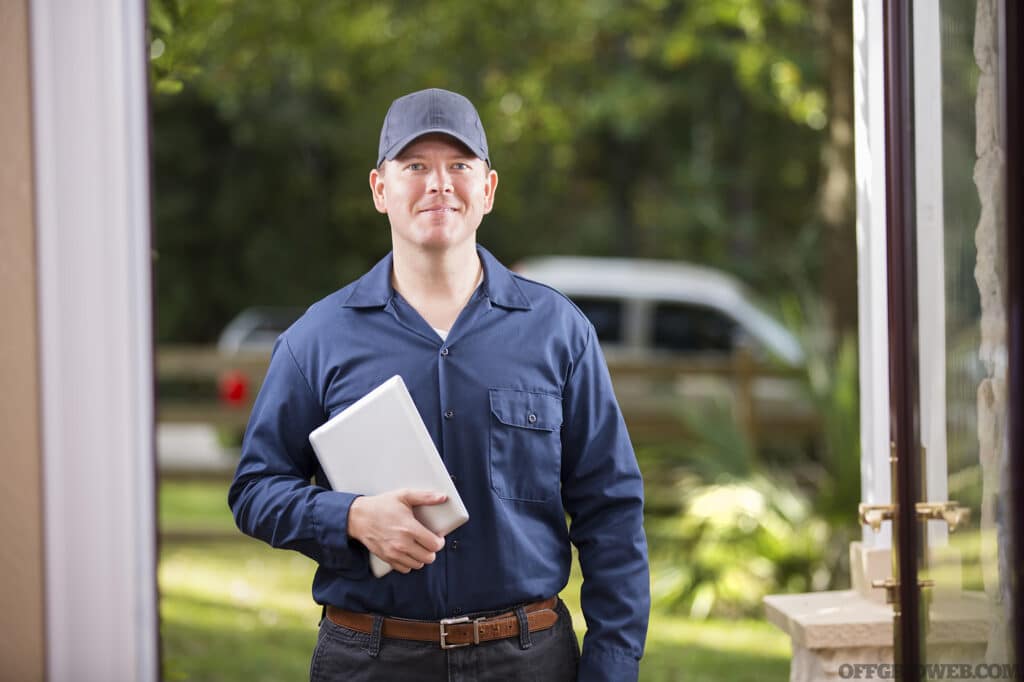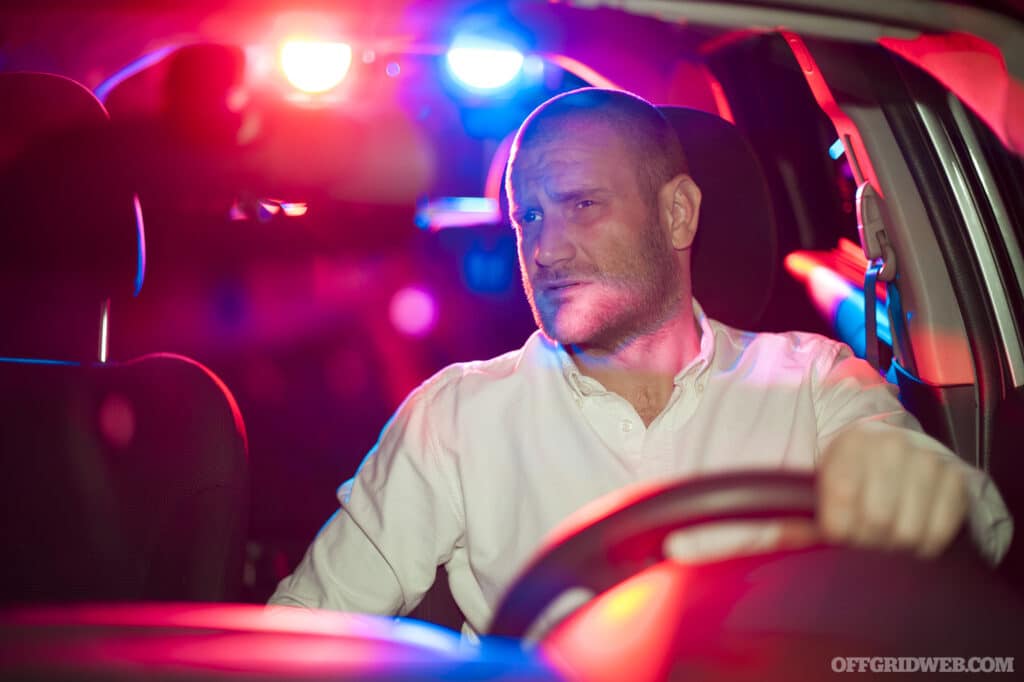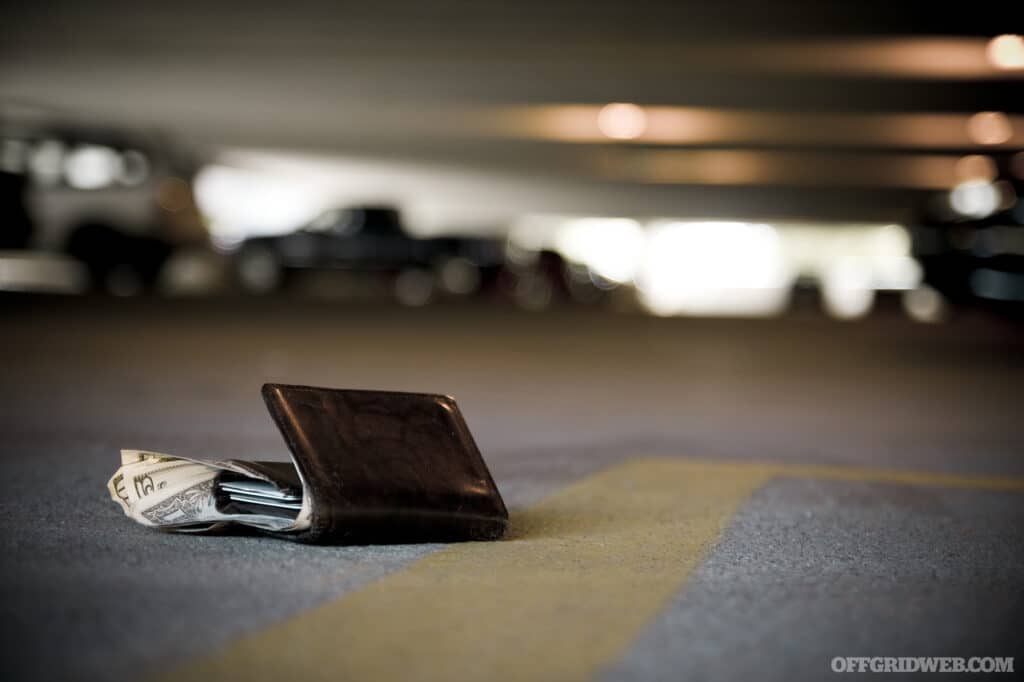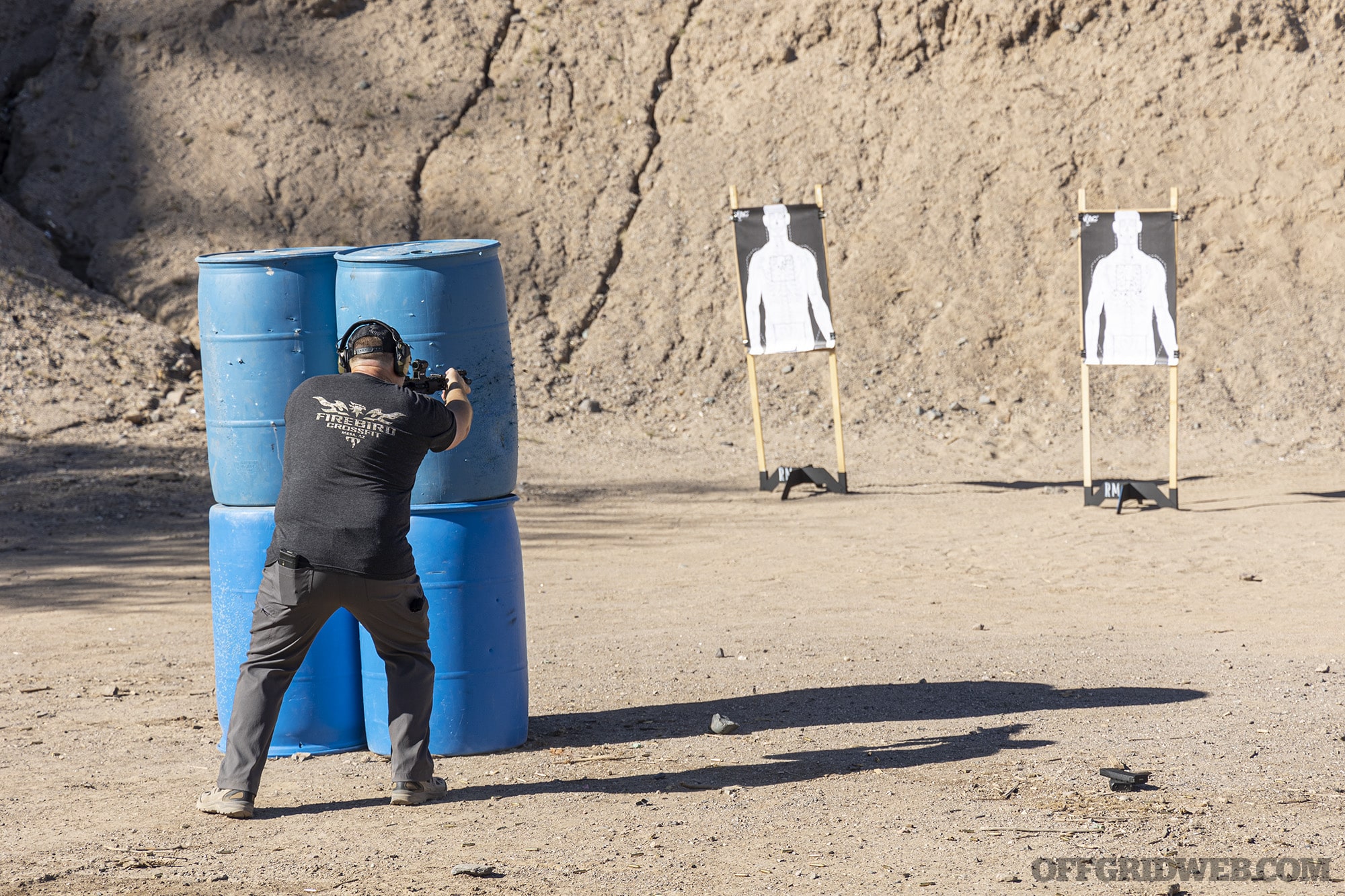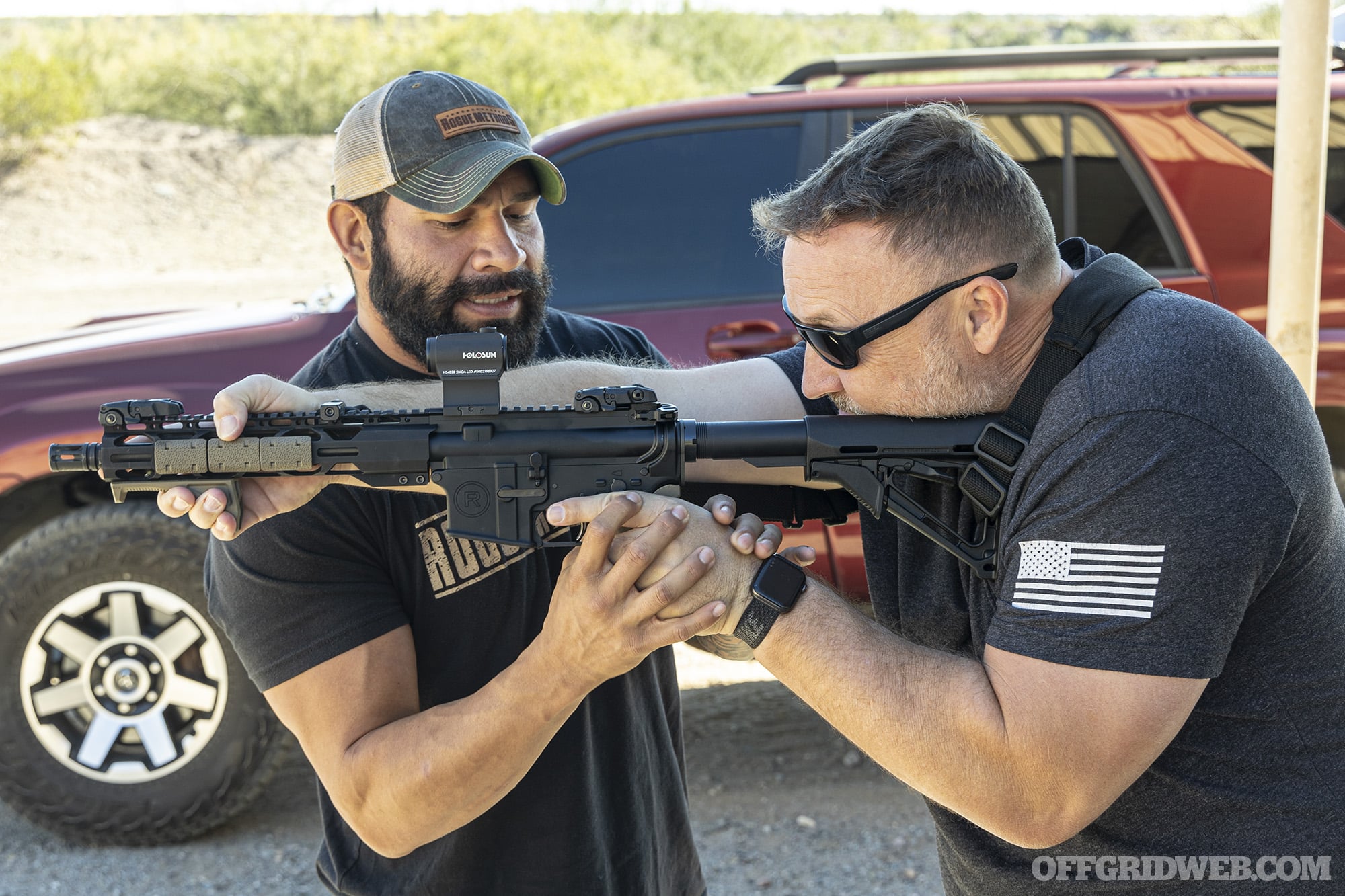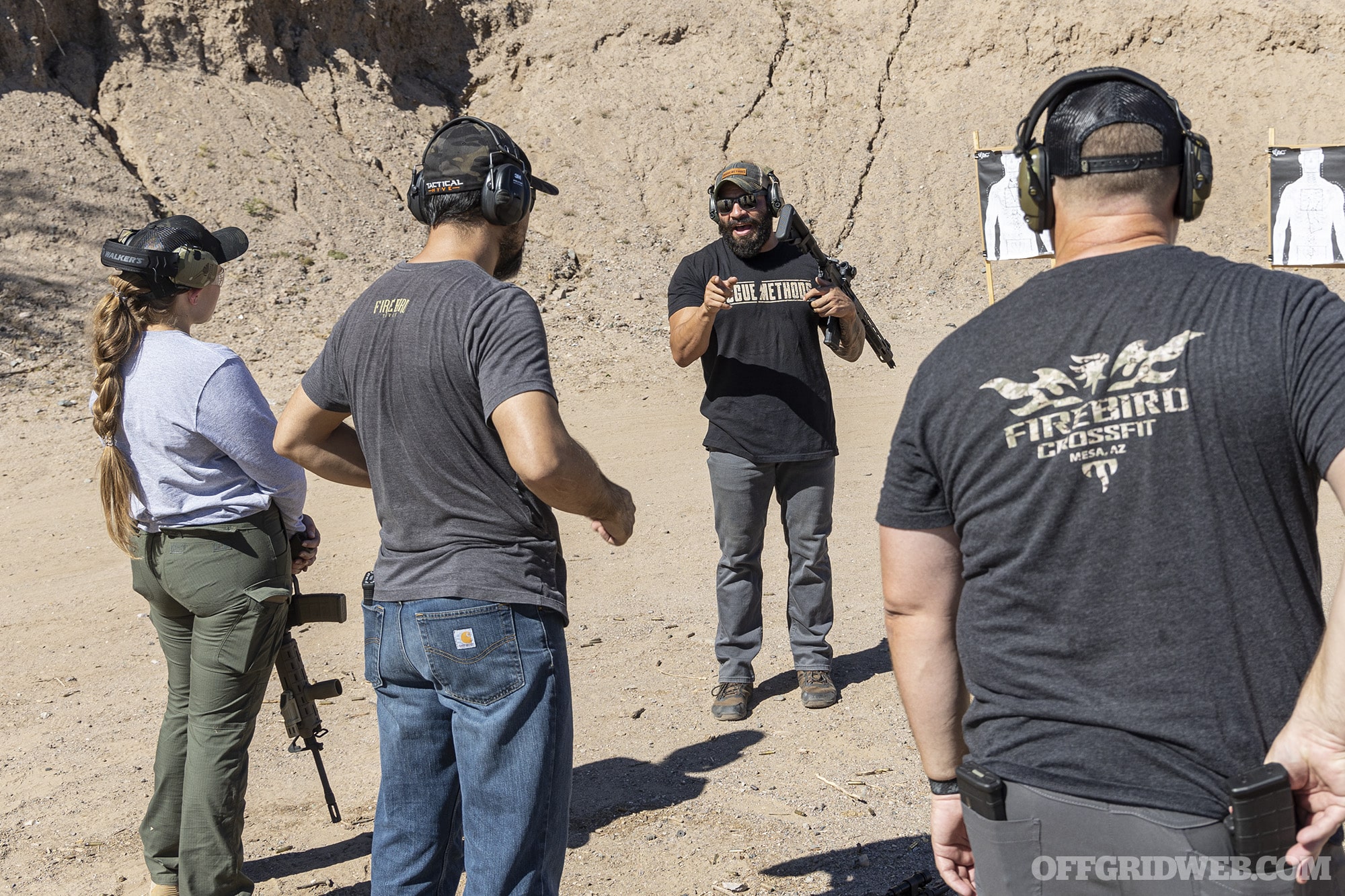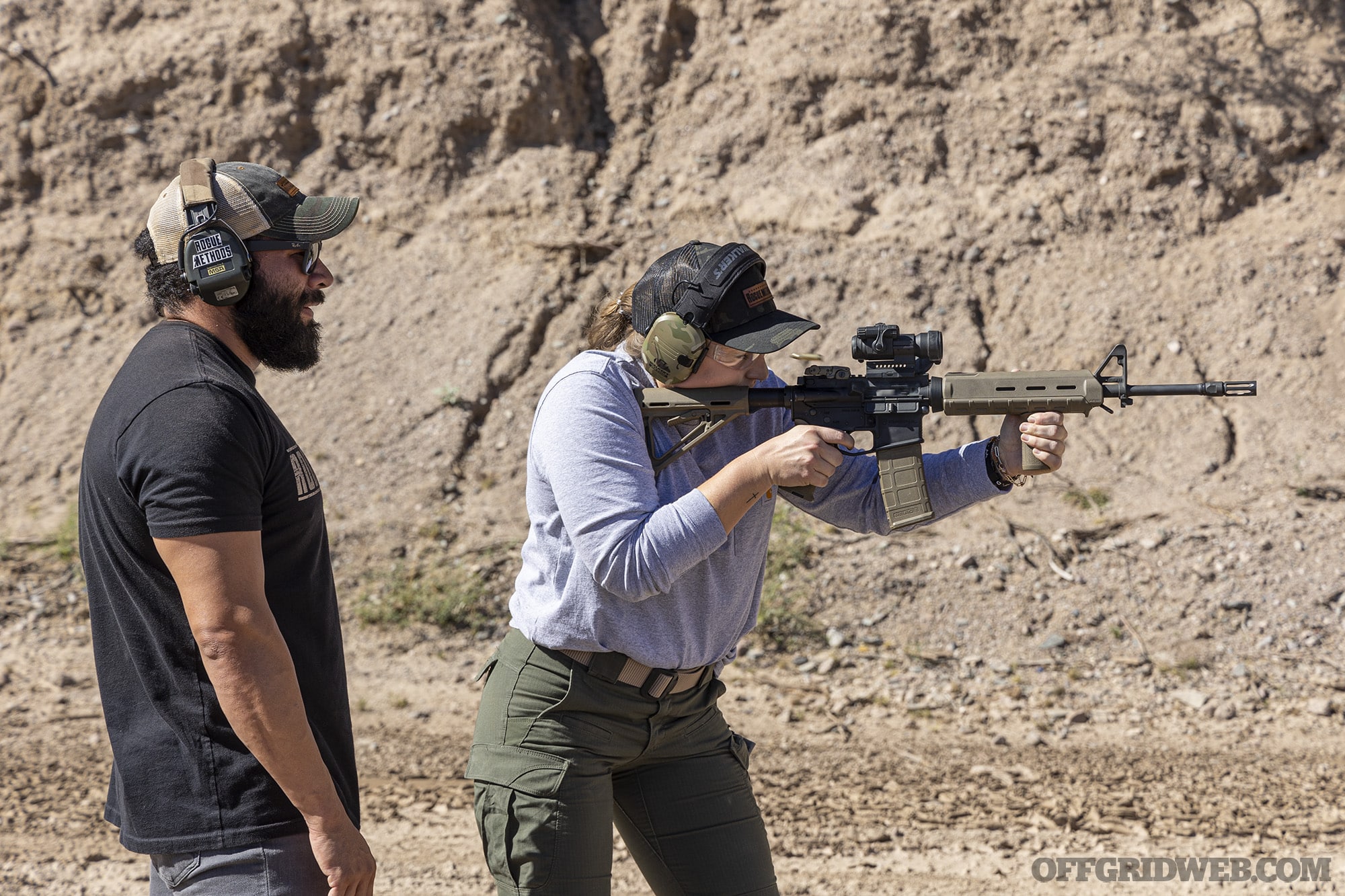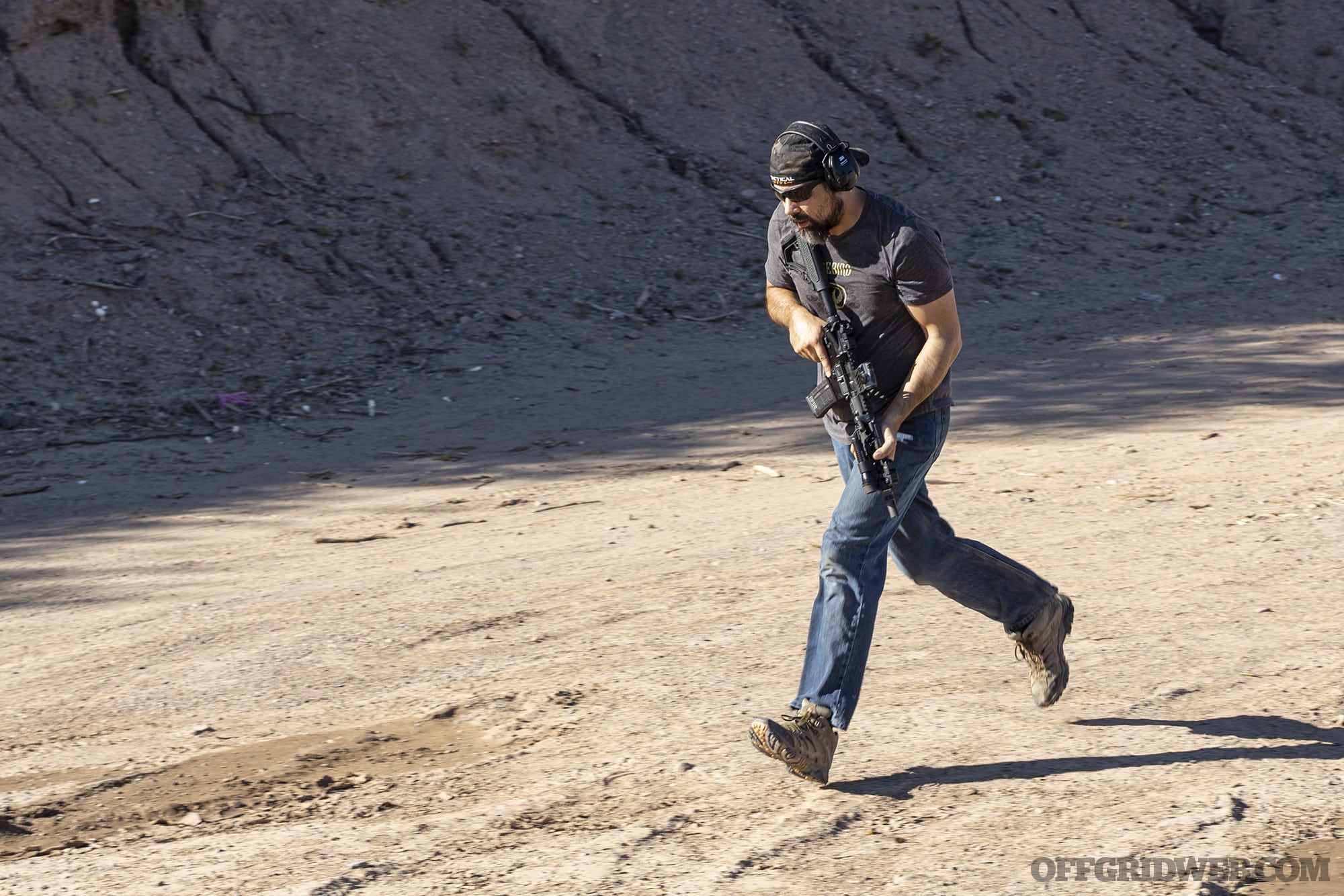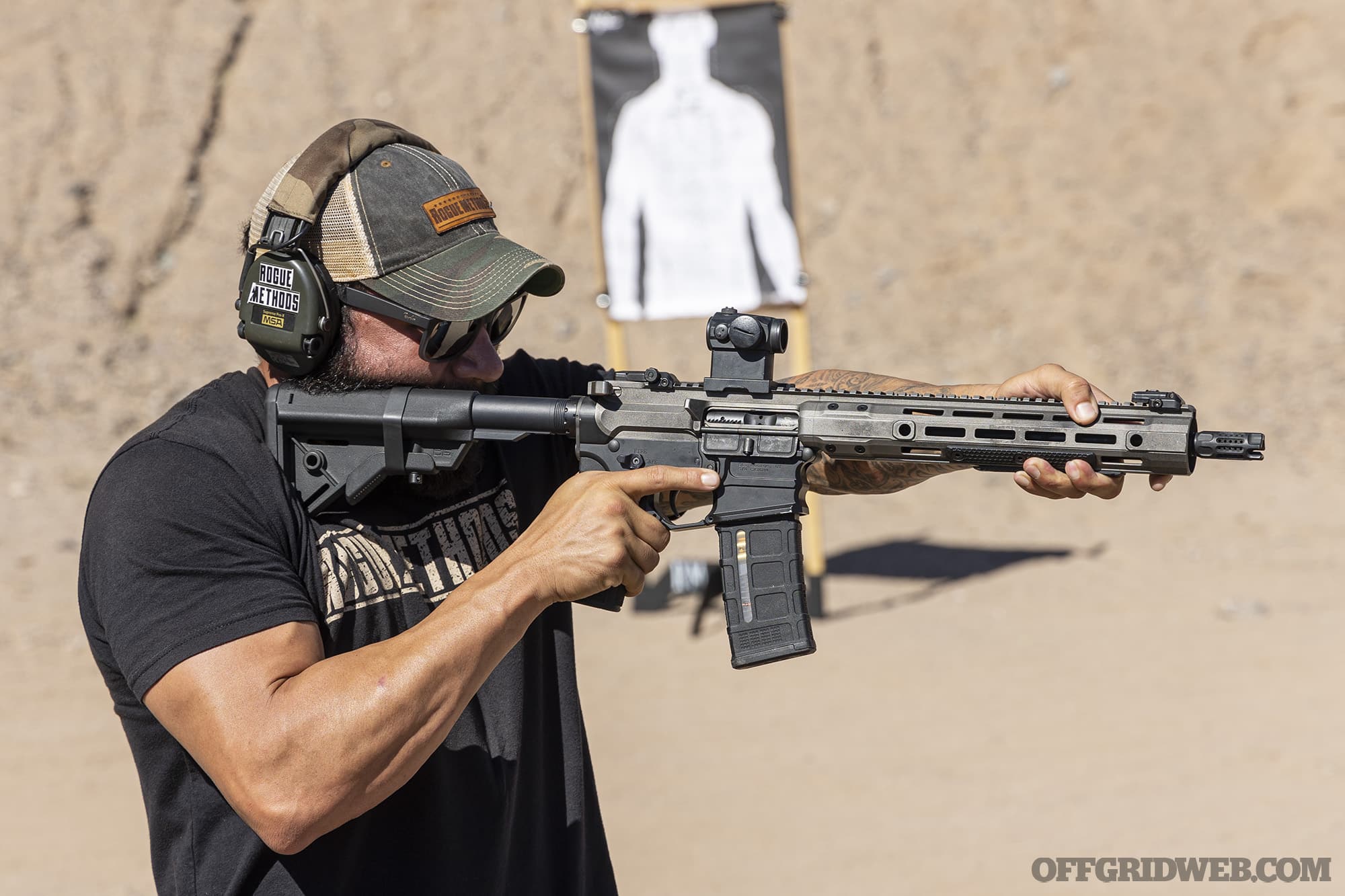In This Article
- MineLab Pro-Find 35
- Spy Briefing Versa Knife
- Gunfighter Design POPS MK2P
- Suunto 9 Peak Pro
- Pnuma 3L Element Proof Rain Jacket
- Meopta Optika LR 10×42 HD
- Mission First Tactical DRC 36
- Garmont 9.81 HELI
- PNW Bushcraft Birch Waxed Canvas Knife Roll Up
- Prepared 4X Survival Torch Fire Starter
- Cold Steel Benchtop Knife Sharpener
- The Headrest Safe Headrest Safe
MineLab Pro-Find 35
NOTES
Whether you're searching for a lost item, locating a wire or water pipe for safety reasons, or have personal security in mind, having a reliable metal detector can be a game-changing tool. MineLab offers multiple metal detecting solutions in their product lineup, including the Pro-Find 35 pinpoint metal detector. At 9.38 inches long and weighing just over 6 ounces, it can be stored easily in a pack, on your belt, or in a vehicle, ready to be used whenever it's needed. The Pro-Find has five sensitivity settings so you can filter out undesirable metal detections, and it's waterproof up to 3 meters, making it ideal for shallow water searching. Volume from its detection indicator can also be adjusted, including vibration intensity. The vibration allows the user to feel if something is being detected if you don’t want noise alerting others nearby, or if searching underwater and unable to hear the detection indicator tone. There are lost-proofing features built into the design as well, which include the bright yellow housing color and an inactivity alarm.
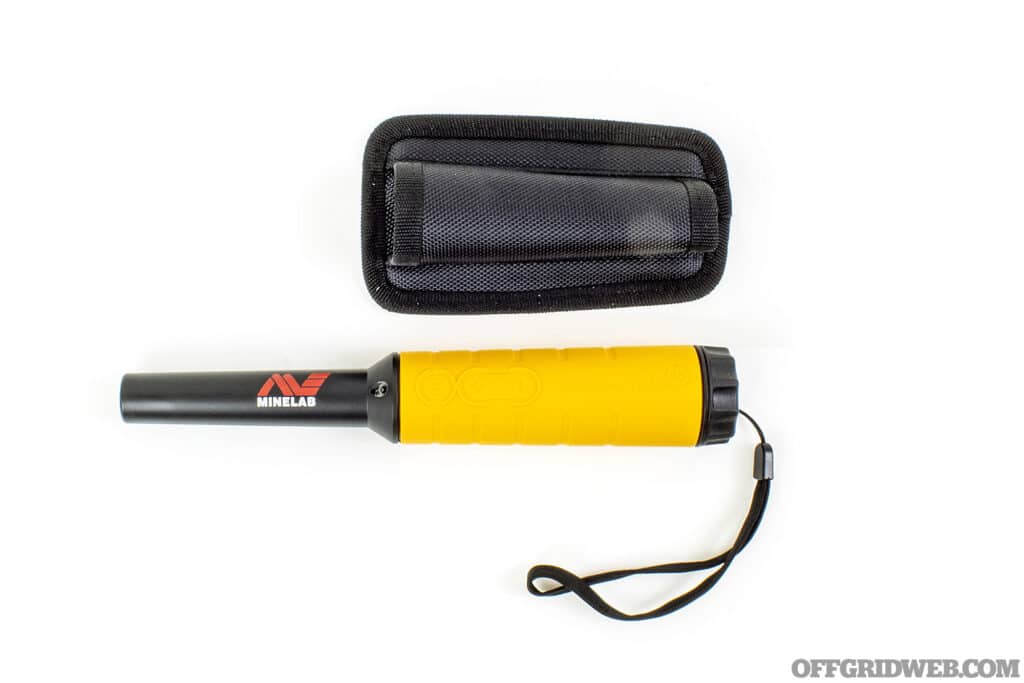
POWER SOURCE
9V
MSRP
$129
URL
Spy Briefing Versa Knife
NOTES
This isn't your average pocket knife, but a versatile array of tools that comfortably fits into easily accessible places. Versa’s blade length is a little over 3 inches, made out of a high carbon stainless steel, and has a slew of built-in features — including straight and serrated cutting edges, a flat head driver, and a wrench to adjust the valve of oxy-acetylene tanks. Built into the rubber-coated handle is a pry bar, glass breaker, and strap cutter. Essentially, it has a tool to mitigate some of the most life-threatening situations you could find yourself, all neatly compressed into a 5-inch handle. If that wasn’t enough, Jason Hanson, former CIA operative, has put together several tutorial videos of how to apply the tools built into the Versa Knife, which can be found on the blade's website. Rather than load your bug-out bag with the extra weight of a dozen individual tools, the Versa offers a lightweight and convenient way to be ready for anything.
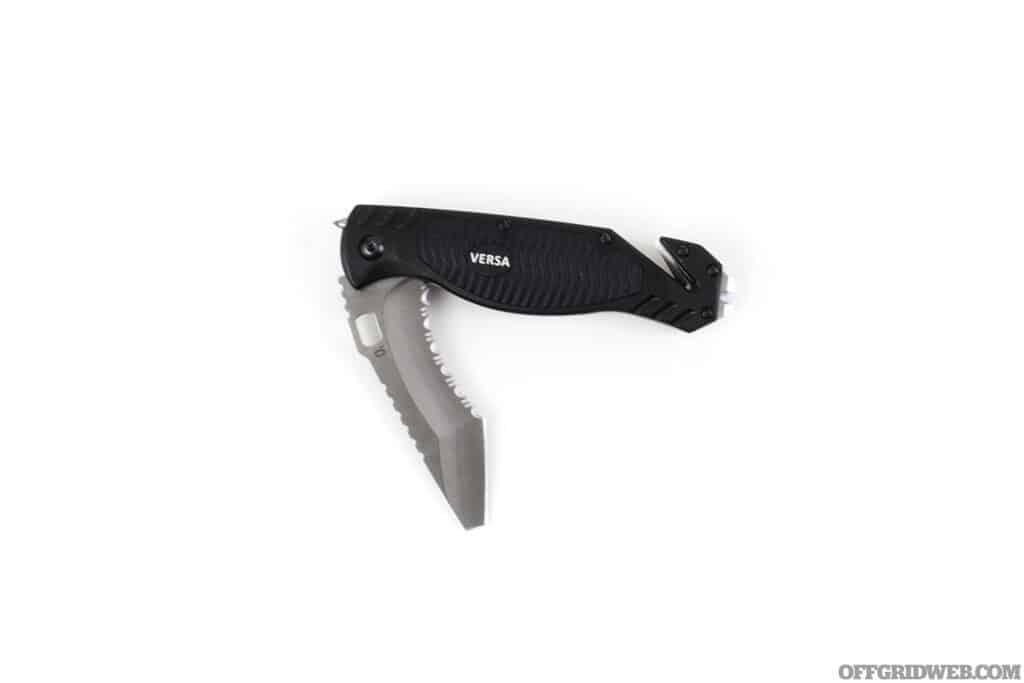
STEEL
AUS 8
MSRP
$49
URL
Gunfighter Design POPS MK2P
NOTES
Born of the collaborative efforts of several elite military operators, the Professional Outdoorsman Precision Skinner (POPS) MK2P is a nearly invincible knife for serious use. CNC ground from CPM 3V steel, the 0.210-inch-thick blade can withstand serious abuse without flinching. Gunfighter Design incorporates its Double Thumb Relief into the blade for a higher level of control when you have to get work done in tight places. G10 handle slabs give the MK2P better durability over other handle materials, and hollow titanium handle pins make it easy to add a lanyard or lash the blade into a fixed position. The blade itself is 3.5 inches long, with an overall length of 8 inches, making it a fixed blade that's not overly cumbersome. A point is machined into the design of the hilt for glass-breaking purposes, and the custom Kydex sheath makes it easy to conceal the blade in pocket, pack, or vehicle.
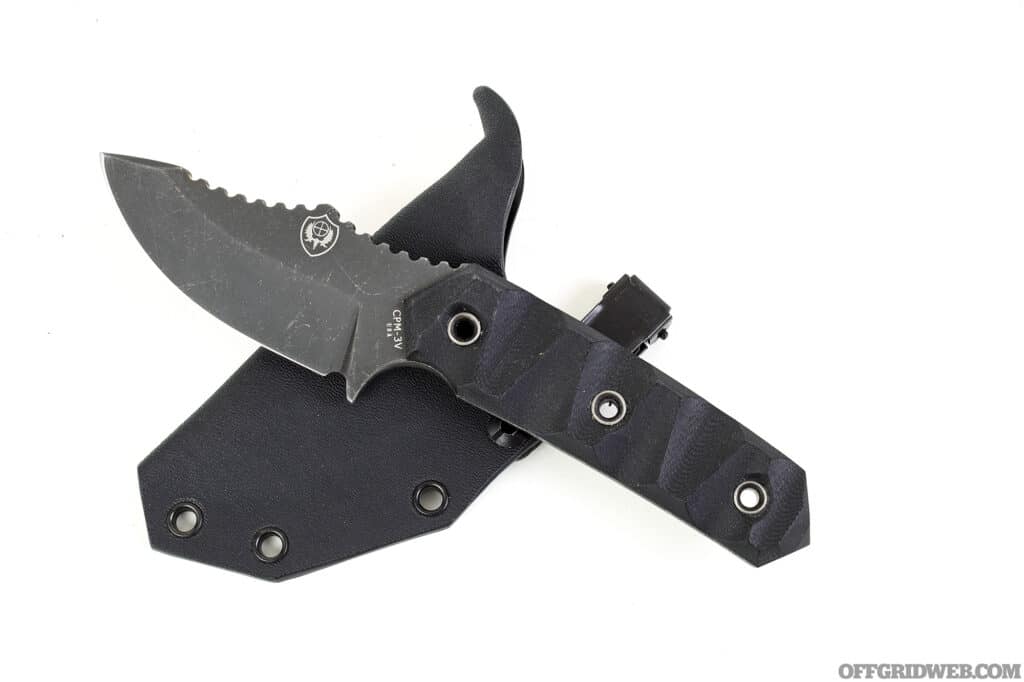
STEEL
CPM 3V
MSRP
$375
URL
Suunto 9 Peak Pro
NOTES
Known for producing some of the best outdoor gear on the market, Suunto has rolled out a time-keeping device capable of much more. Designed and tested to withstand military-grade durability standards, the watch face of the 9 Peak Pro is sapphire crystal, the body is stainless steel, and some models are available in titanium. It's waterproof up to 100 meters and can run 40 hours continuously with the most power-hungry GPS features running. If the Peak Pro is used lightly as a timepiece, it can last as long as 21 days on a single charge. Whatever your outdoor activity is, there are 95 individual sport modes to track your activity, including a dedicated snorkeling mode. Bluetooth connectivity connects the 9 Peak Pro to most current smart phones and offers an enhanced method of planning workouts, tracking performance, and navigating the landscape. It's thin and light, only 0.43-inch thick, weighs 2.26 ounces, and with the incorporation of a few Suunto accessories, can be strapped to a handlebar or customized with different colored wrist straps.

COLORS
Black, Blue, Gold, Green
MSRP
$549
URL
Pnuma 3L Element Proof Rain Jacket
NOTES
Nothing leads to more fatalities in the outdoors than exposure to the elements, so finding rain gear that's both functional and durable is crucial to self-preservation. The Pnuma 3L Element Proof Rain Jacket delivers both. By utilizing interwoven polyester, the 3L is 100-percent waterproof up to 20,000mm, and has a breathability rating of 15,000 g/m2/24h. What this means is that it can keep torrential rain from seeping through without overheating the wearer while out and about. The built-in hood keeps the noggin dry, and anti-abrasion overlays in high-wear areas, like the shoulders, prevent damage from things like pack straps. For hunters or other tactical situations, the Caza pattern easily blends into many wilderness settings, and for the urbanite or casual use, the Beluga color is a classy neutral tone. Weighing in at just over 20 ounces, the 3L is serious protection from the elements that will not feel like a burden in a ruck.
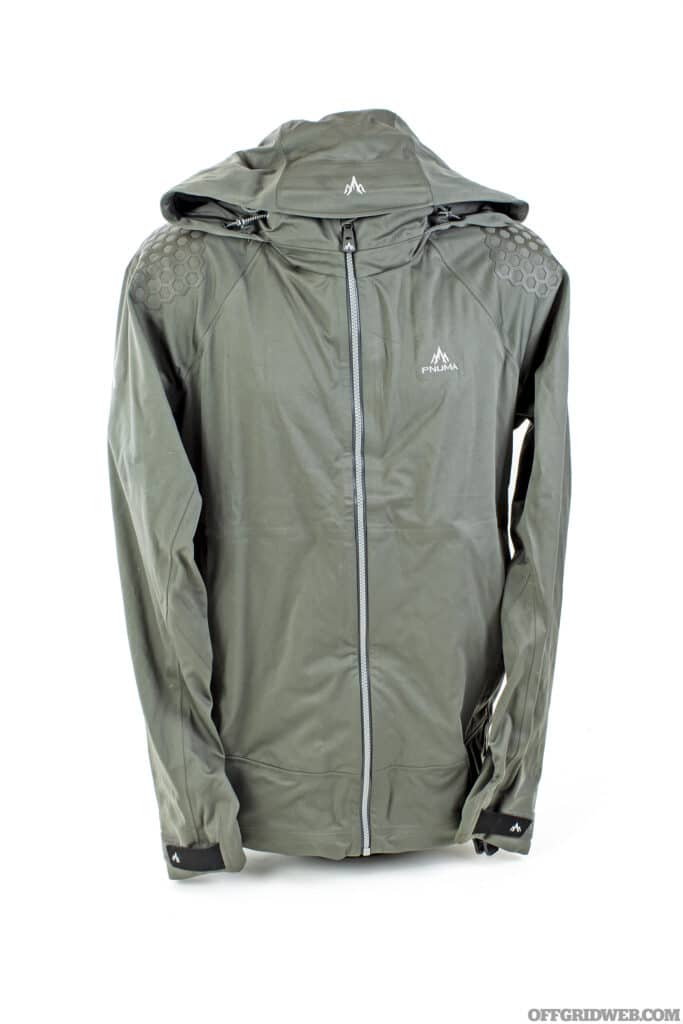
COLORS
Caza, Belluga
MSRP
$260
URL
Meopta Optika LR 10×42 HD
NOTES
It has been said that the best optic is the one you have. Hopefully, the one you have is a German-engineered Meopta, because it's hard to beat their level of visual clarity. As if Meopta’s crystal clear objective lenses weren’t enough, they’ve gone and added a built-in laser range finder to their binos. The Optika LR 10×42 HD is a serious pair of binos, capable of accurately ranging out to 2,600 yards with a minimal margin of error of +/- 2 yards. Its magnesium body is coated in rubber to keep it from getting damaged by moisture, dust, or drop shock. Each Optika LR also comes with a protective case, carry strap, and lens covers. Looking through the binos will give the user a 6.7-degree field of view, with 85 percent daylight transmission up to 10 times magnification. And with the press of a button, you can easily determine the range of whatever you're looking at. A fully charged battery will yield up to 1,200 measures.

WEIGHT
32.6 oz.
MSRP
$1,900
URL
Mission First Tactical DRC 36
NOTES
Going to the range can quickly turn into a hassle when more than one firearm is being lugged around. Cases tend to be big and clunky, and it can be stressful leaving a gun unattended while making multiple trips to and from a vehicle. The DRC (Double Rifle Case) 36, is here to mitigate that stress by offering the storage capacity of two rifles up to 36 inches long. A padded divider separates the main compartment, preventing bumps and scuffs when storing two rifles. Extra accessory compartments easily store common range gear like ear pro, targets, or maintenance tools. MOLLE webbing built into the outside adds another layer of versatility, allowing for endless customized loadouts. Carry it like a briefcase for short distances or utilize the pack straps to wear it like a backpack for those range sites off the beaten path. The DRC’s matte color blends into a multitude of surroundings for tactical applications, and it has a nylon Velcro backing for name plates or morale patches.
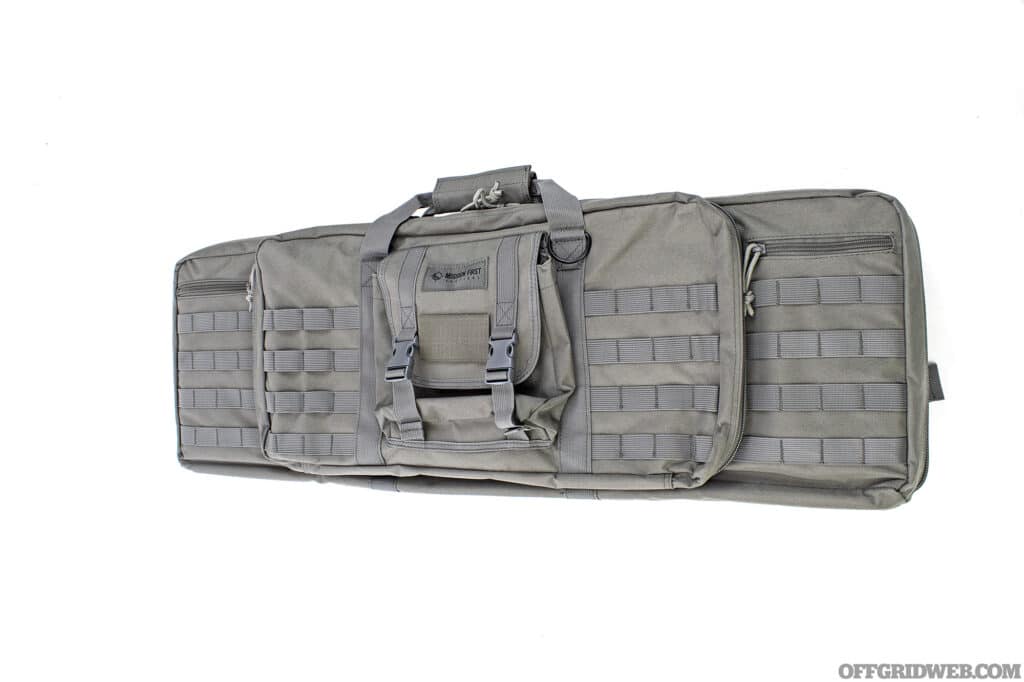
COLORS
Moss Green
MSRP
$55
URL
Garmont 9.81 HELI
NOTES
Not every dismounted excursion overland necessitates an 8-inch hiking boot. For those family trips to a well-established park or a light stroll through some rolling hills, footwear that's light and breezy can make the experience much more enjoyable. Garmont’s 9.81 HELI is a lightweight, low-top shoe that looks and works great in the urban jungle just as much as it does in an oak savannah. Striking a comfortable balance between comfortability and support, strapping on a pair of 9.81 HELIs will have you enjoying light hiking or Nordic walking in no time. For those who want to enjoy the outdoors in a hurry, Garmont’s speed lacing system will expedite hitting the trails. The aesthetics make the 9.81 HELI a great contender for casual office wear for those who may want to get up and move during a lunch break, and Garmont’s attention to quality design will have these shoes lasting for years to come.
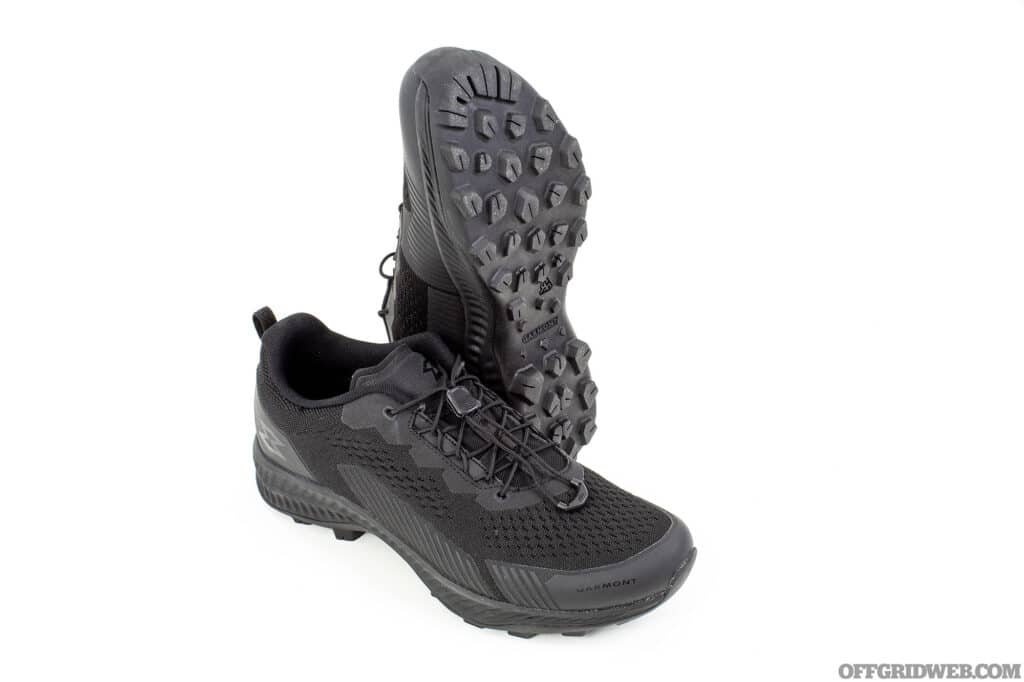
COLOR
Black
MSRP
$135
URL
PNW Bushcraft Birch Waxed Canvas Knife Roll Up
NOTES (Knives Not Included)
Got a few fixed blade knives lying around and would like a traditional and timeless way to keep them organized? PNW Bushcraft has the solution with their Birch Waxed Canvas Knife Roll Up. PNW Bushcraft is leading the waxed canvas revival by crafting durable handmade products perfect for the outdoors. Their Birch Roll is 15 by 25.5 inches and features eight pockets that are 5 inches deep by 3 inches wide. Once all your favorite fixed blades are stowed in the pockets, roll them up and secure them with the leather cord, or use the built-in grommets to hang them on the wall for easy access. The waxed canvas will protect your knives from the elements and add another layer of corrosion resistance to high carbon steels. Waxed canvas is easy to clean and maintain, making the Birch Roll perfect for outdoor expeditions. In an era of synthetic fiber, CNC machines and intelligent software, having a product made of materials that have stood the test of time for hundreds of years is a refreshing change of pace.
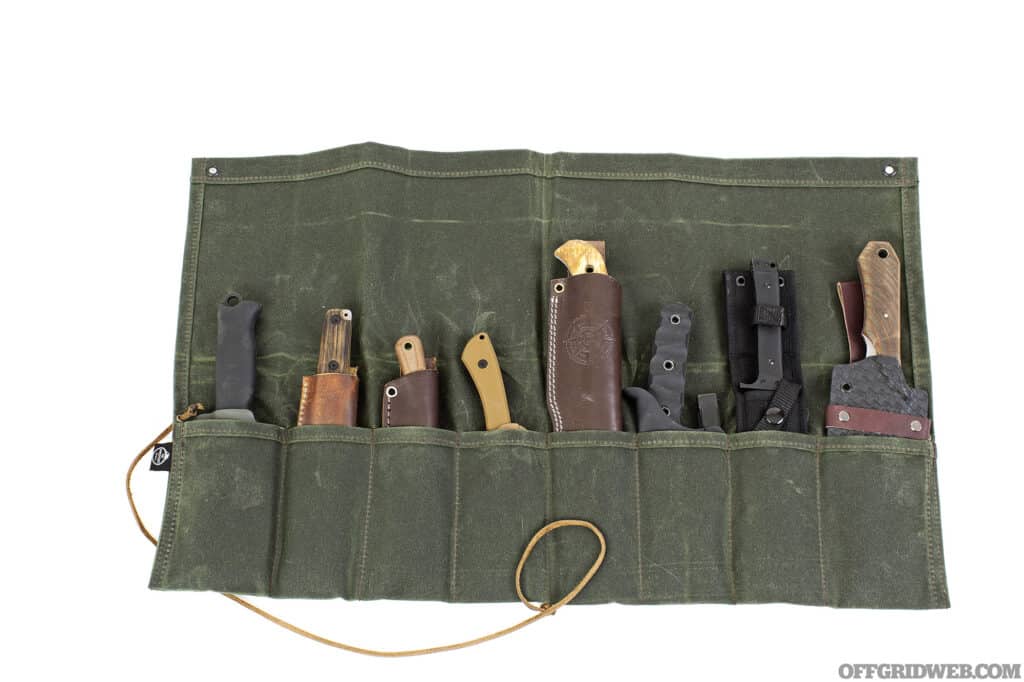
CAPACITY
8
MSRP
$79
URL
Prepared 4X Survival Torch Fire Starter
NOTES
Few things are as important as being able to create a fire. Cooking food, staying warm, and feeling comforted by the glow of a campfire are just the tip of the flame, so to speak. Unlike past generations, modern tech has made fire-making knowledge nearly obsolete. Fortunately, we don’t have to be the master of friction fire-starting methods to get a blaze going. Prepared 4X bridges the knowledge gap with the Survival Torch. Available in two sizes, the Survival Torch utilizes a thick ferrocerium rod, curved steel striker, and 36-inch wax-infused hemp rope to easily transform sparks into flame. The hemp rope is great tinder; it catches the spark almost effortlessly. The 36-inch length has an approximate continuous burn time of three hours. The aluminum housing of the Survival Torch is bright orange, so it's easy to keep track of and has a tube to pull the hemp cord through to safely extinguish the flame. Keeping the lit hemp cord close to the end of the tube protects the embers from high winds and makes for a handy lighter.

SIZES
4, 6 inches
MSRP
Starting at $20
URL
Cold Steel Benchtop Knife Sharpener
NOTES
Keeping a knife sharp is undeniably one of the most important maintenance skills the owner of a blade can master. But sharpening freehand can lead to uneven edges and possibly ruin cutting potential. Cold Steel, one of the best-known knife companies in the world, has just the tool to keep your sharpening angles even and consistent, regardless of your level of skill. The Benchtop Knife Sharpener holds your blade locked in place, while you move the sharpening stones at a predetermined angle. Simply adjust to the desired angle — anywhere between 15 and 30 degrees — choose the appropriate grit, and pass the sharpening stone over one side of the edge as many times as needed. Once one side of the knife edge has been adequately sharpened, rotate the blade clamp and run the sharpening stone over the other side. The base of the Benchtop Knife Sharpener is sturdy enough that it doesn’t require clamping, and the whole kit comes in a durable storage case to keep all the components neatly organized.

SHARPENING GRITS
300, 600, 800, 1,000
MSRP
$129
URL
The Headrest Safe Headrest Safe
NOTES
Depending on where you live, traveling in a vehicle can pose complex security risks. There may be a need to keep high value items discreetly locked away. In areas with high crime rates, balancing local laws with having access to some form of self-defense could be a life-saving endeavor. Glove compartments are an obvious place for vandals breaking in, and typically not considered a secured location for the transportation of a firearm. This is where the Headrest Safe comes in. As the name implies, it's a locked safe built into the form of a vehicle headrest. There are models available for both the driver and passenger side of the vehicle. They come in a variety of colors and materials to blend in seamlessly with the vehicle's upholstery. Programmable key codes and a programmable touch sensor ensure only the intended user has access. The inside cavity is 11 inches long, 8 inches tall, 6 inches wide, and protected by 16- and 18-gauge steel.
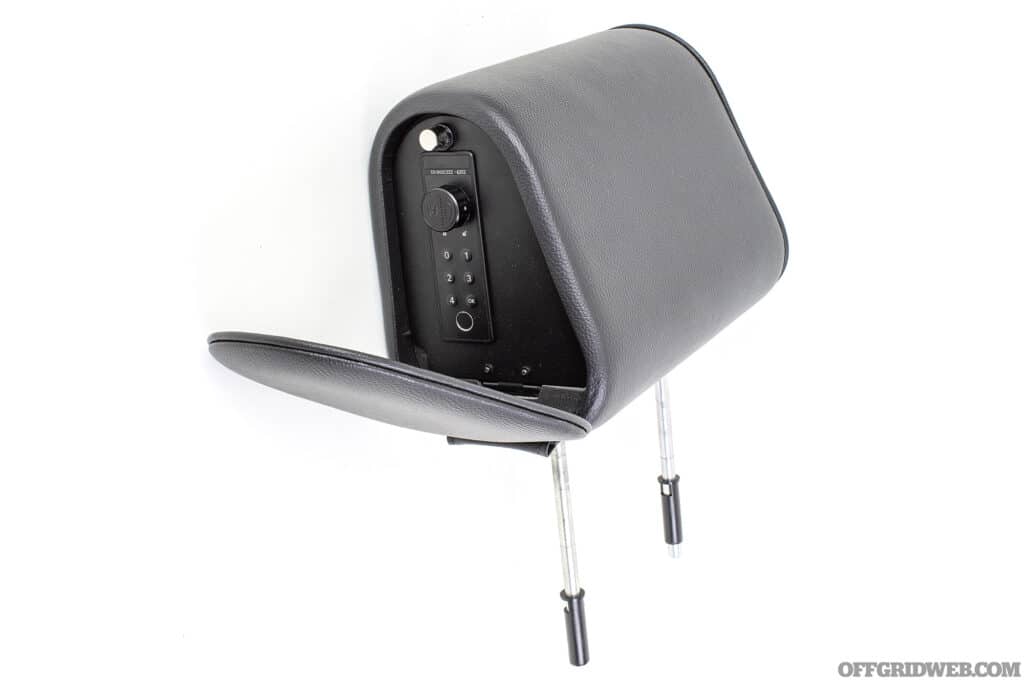
COLORS
Black, Charcoal, Dark Gray, Light Gray, Tan
MSRP
$489
URL

